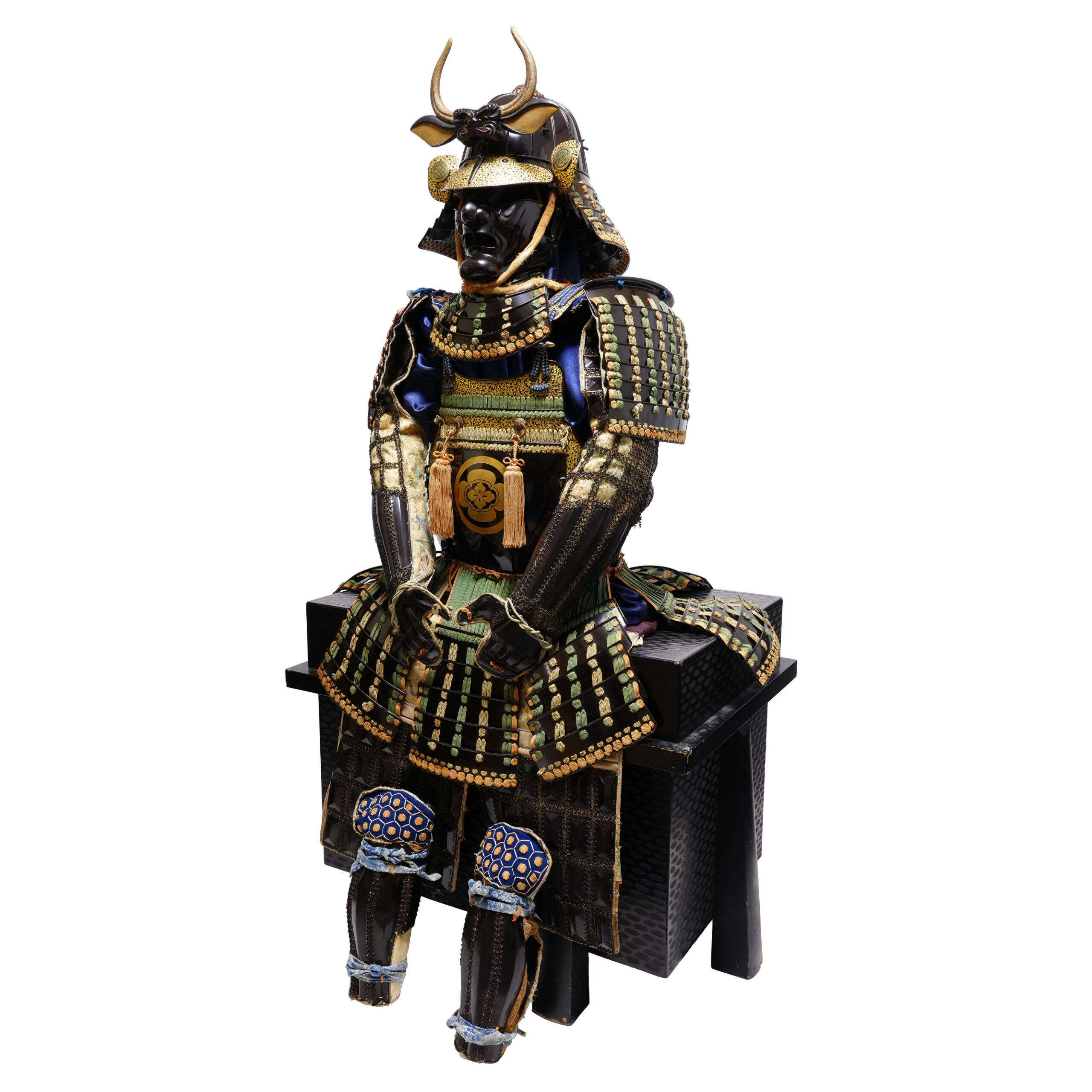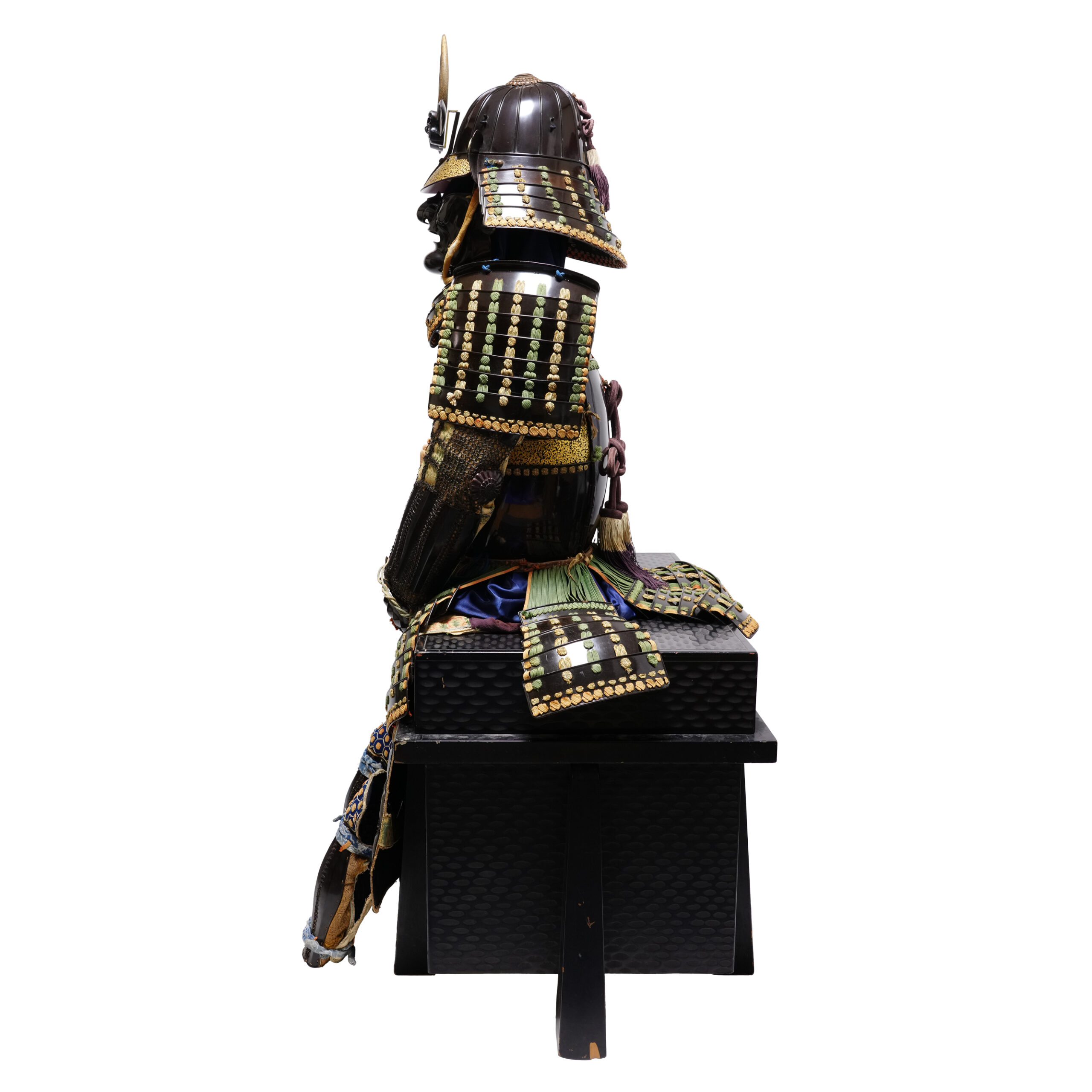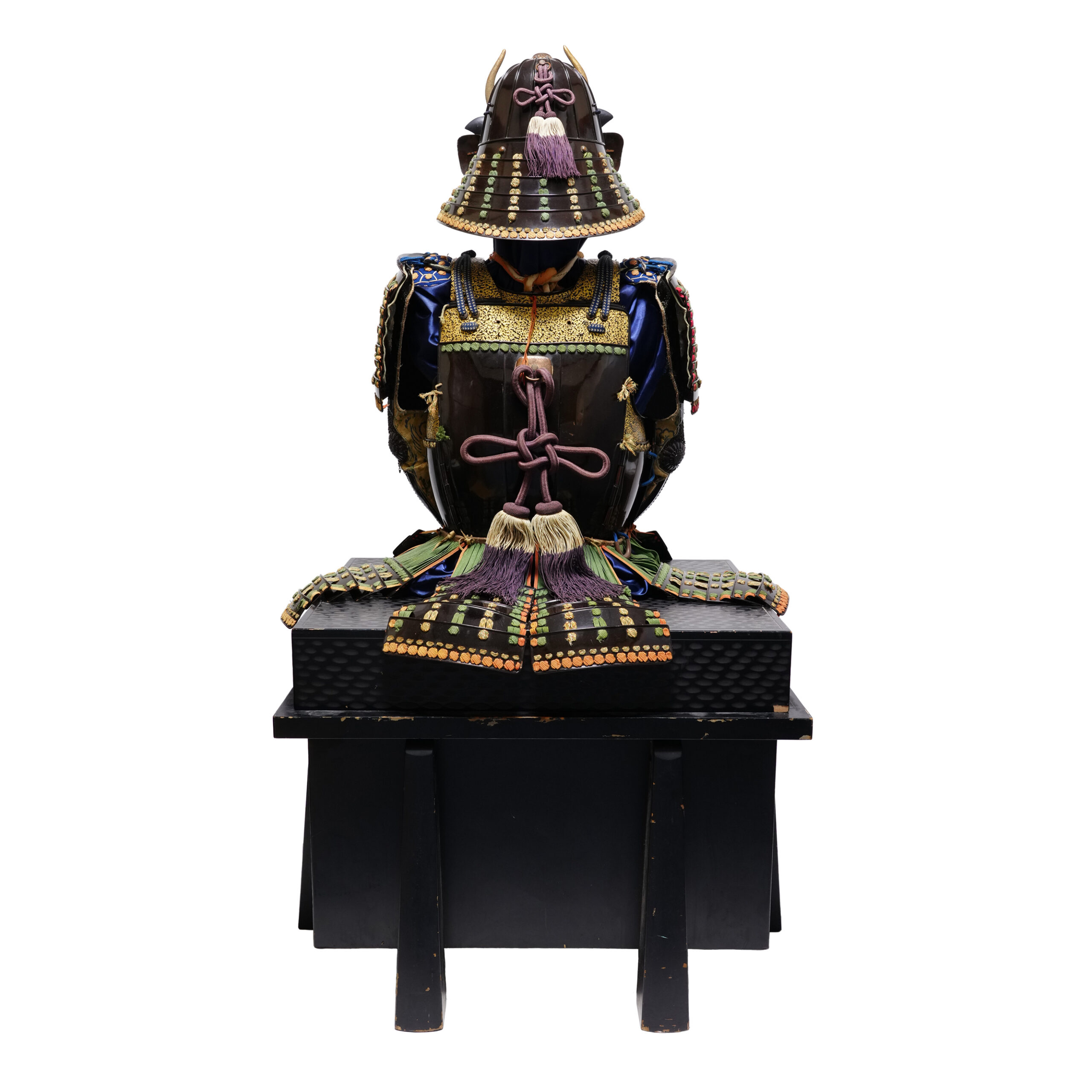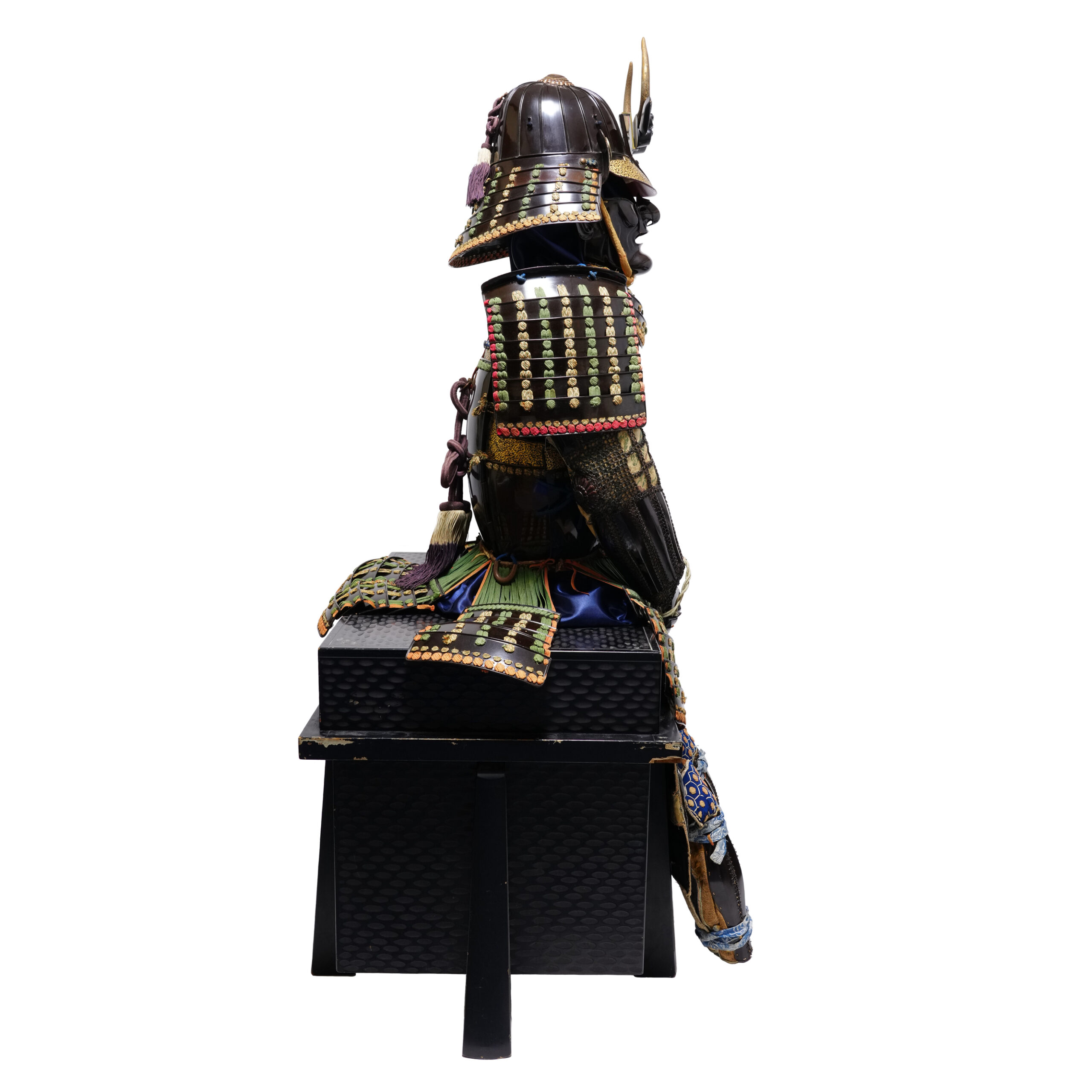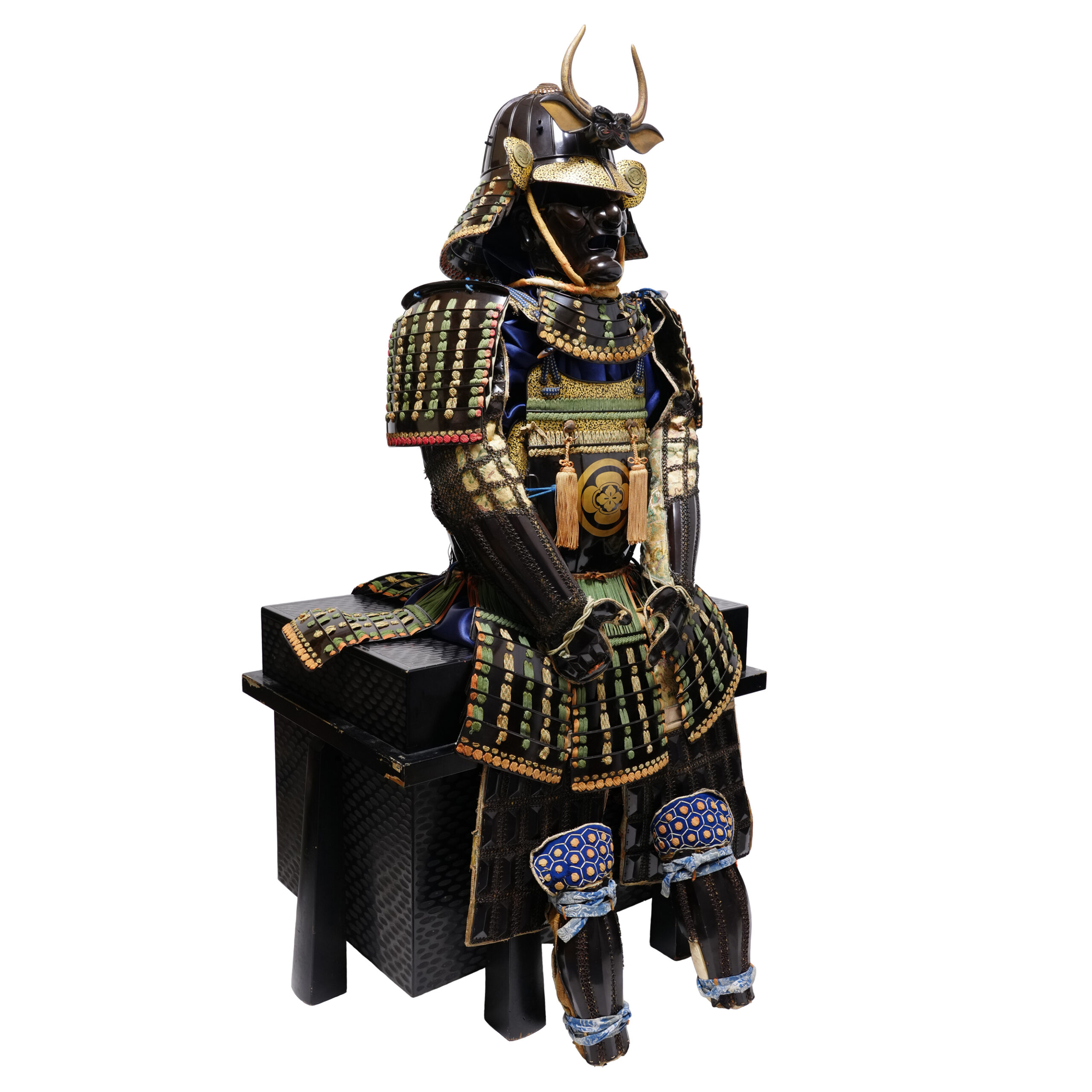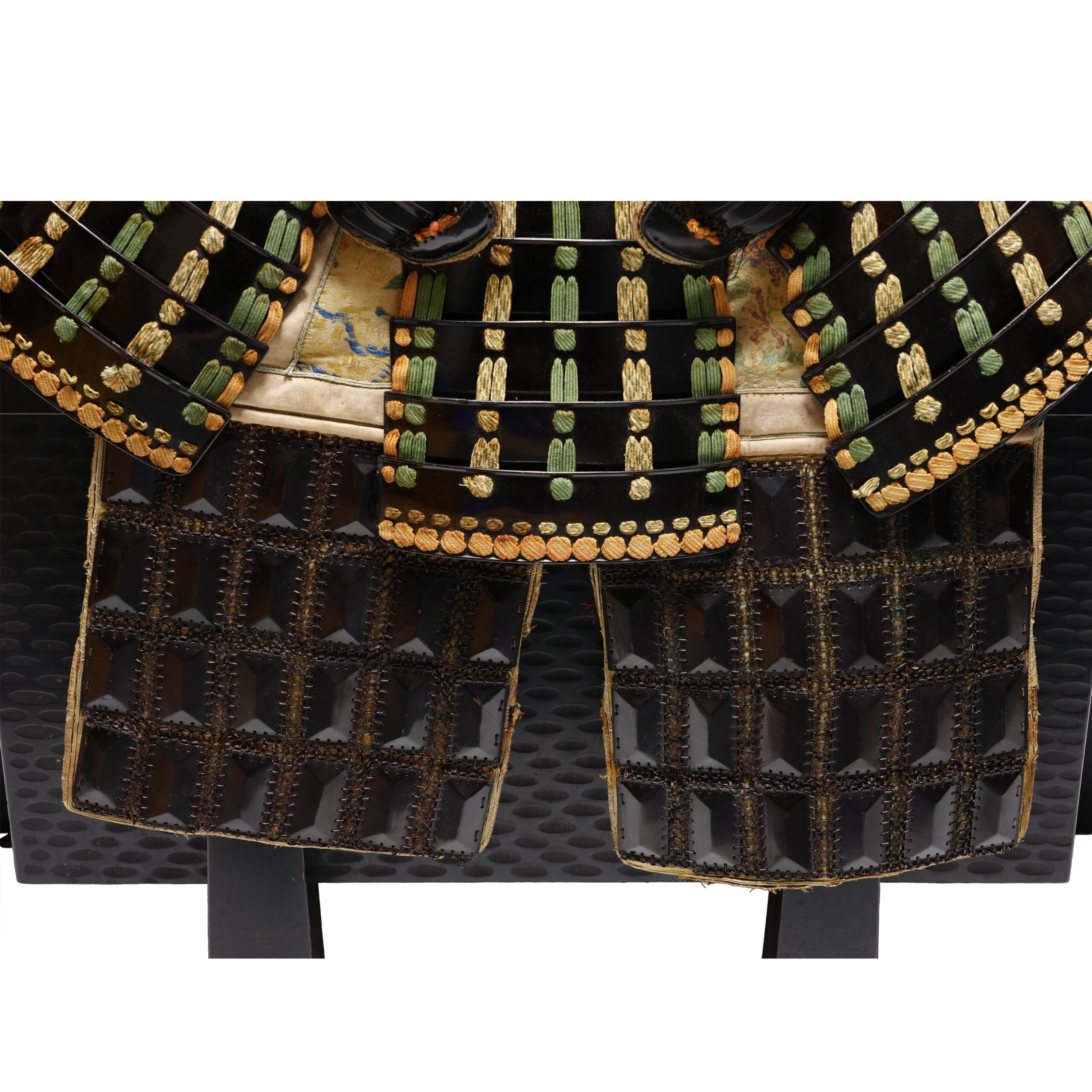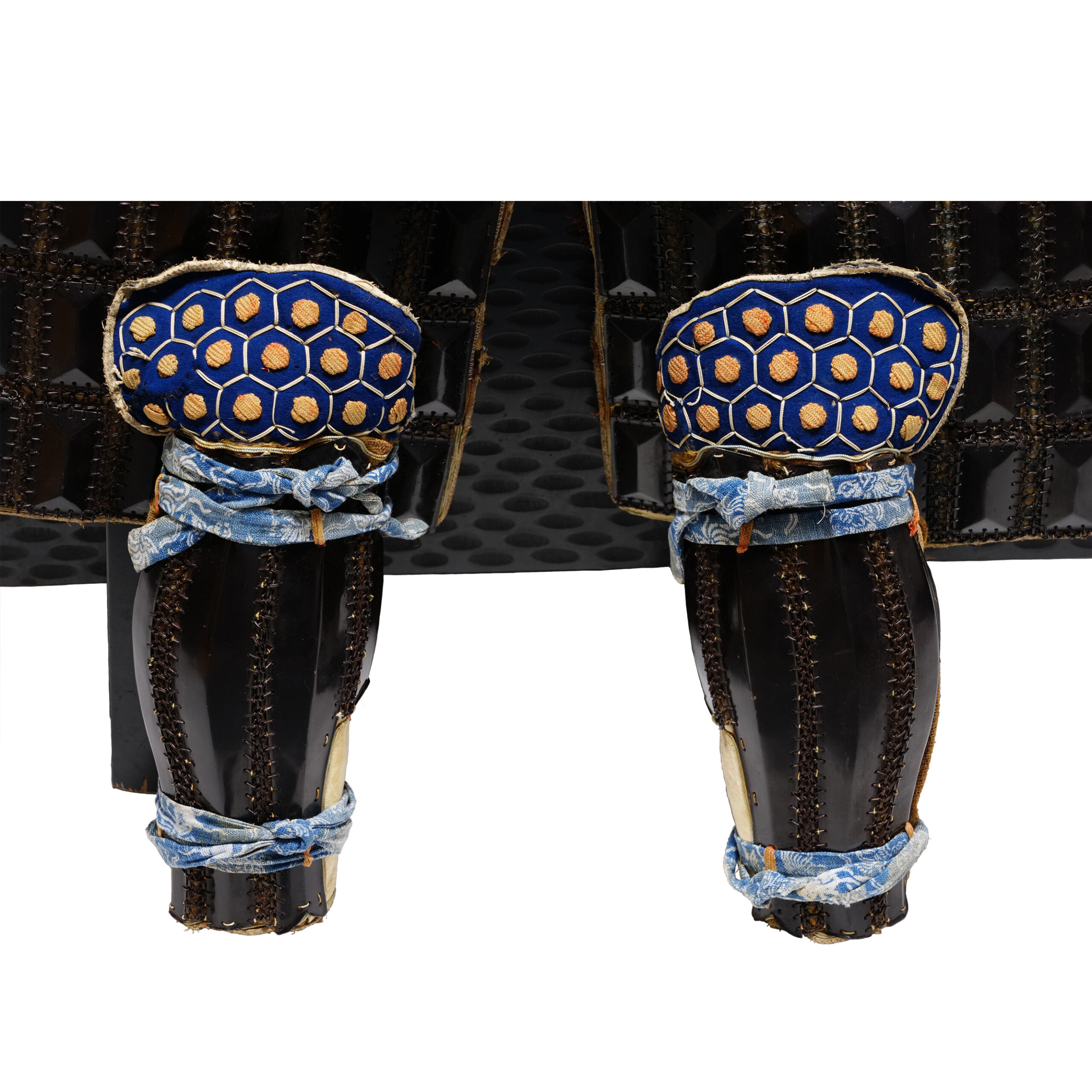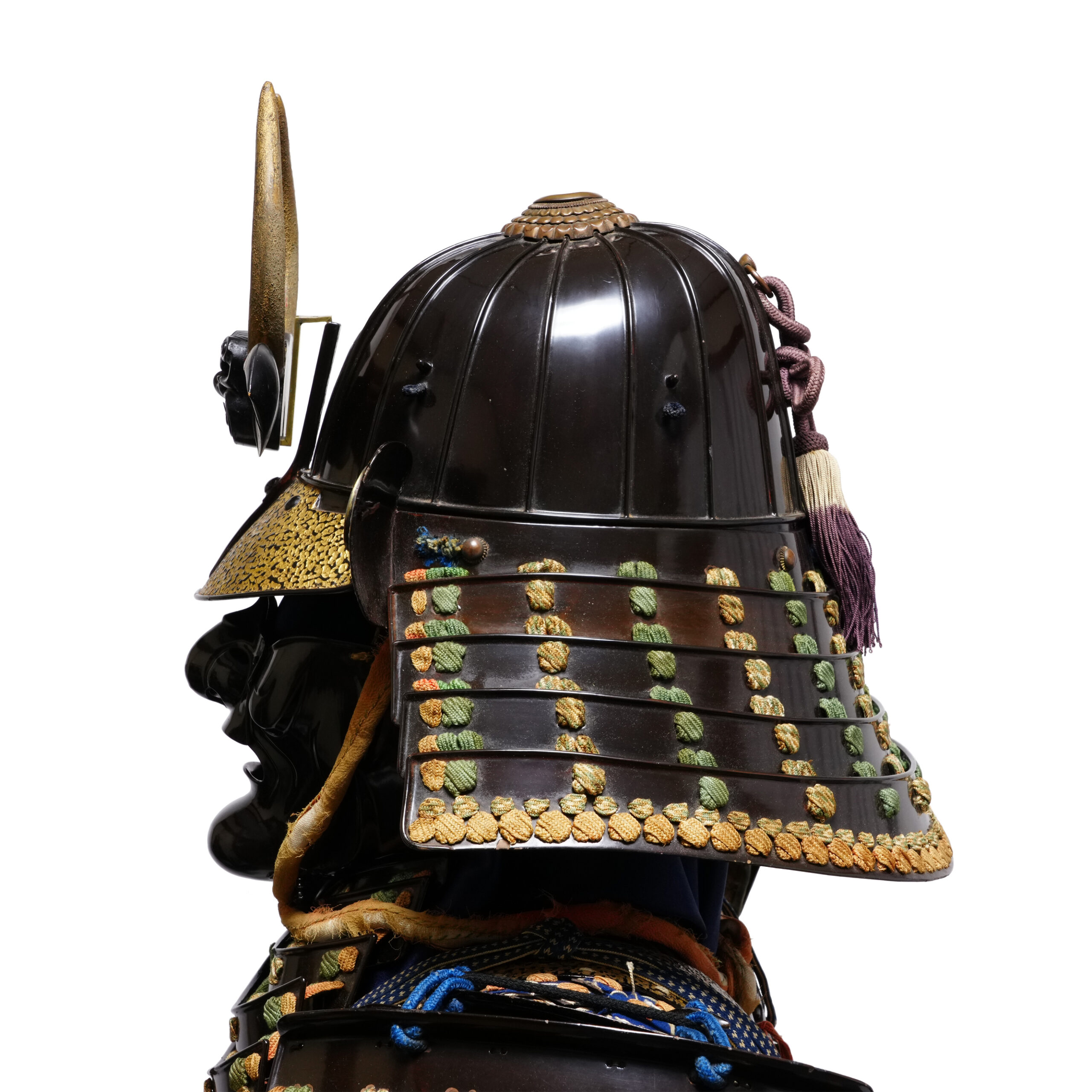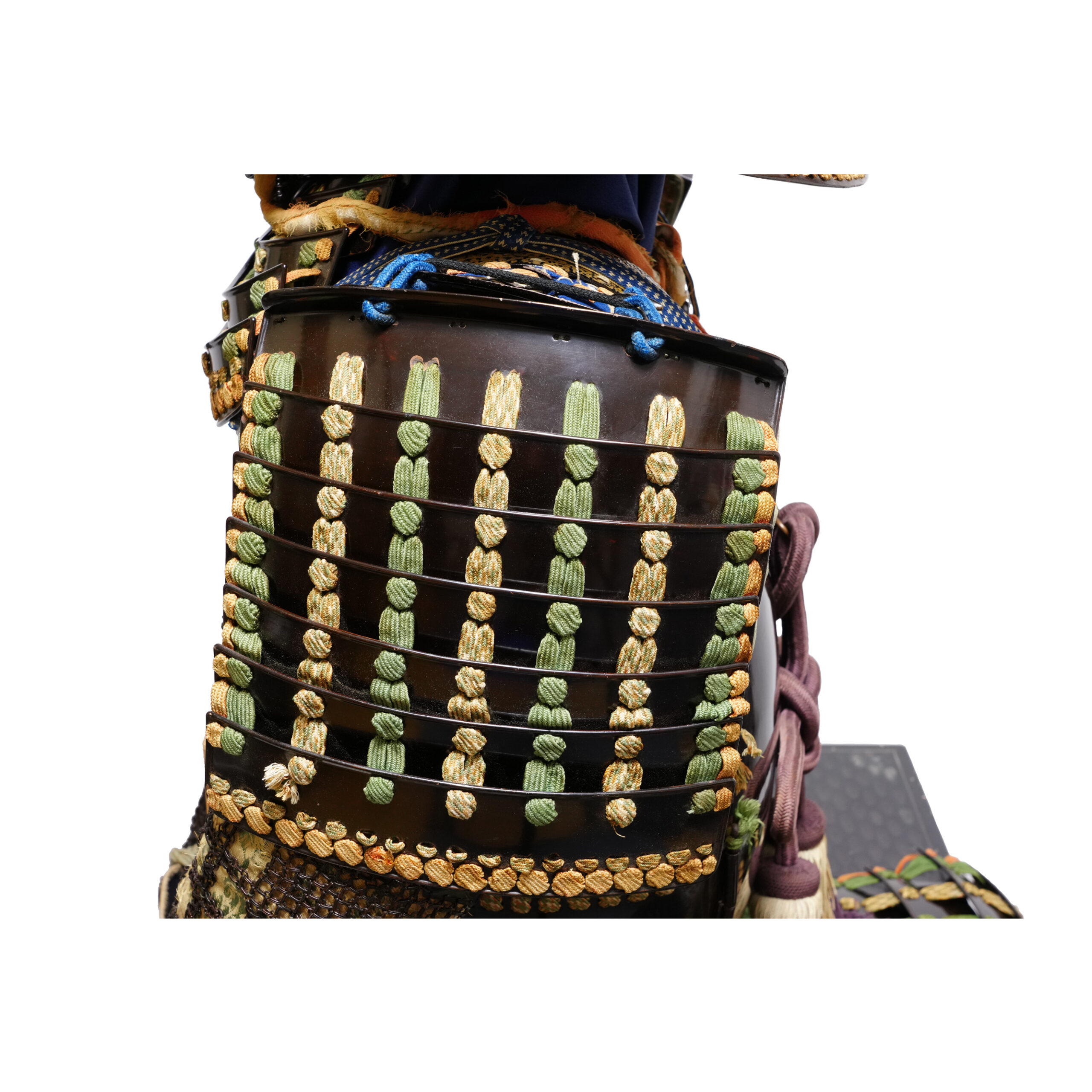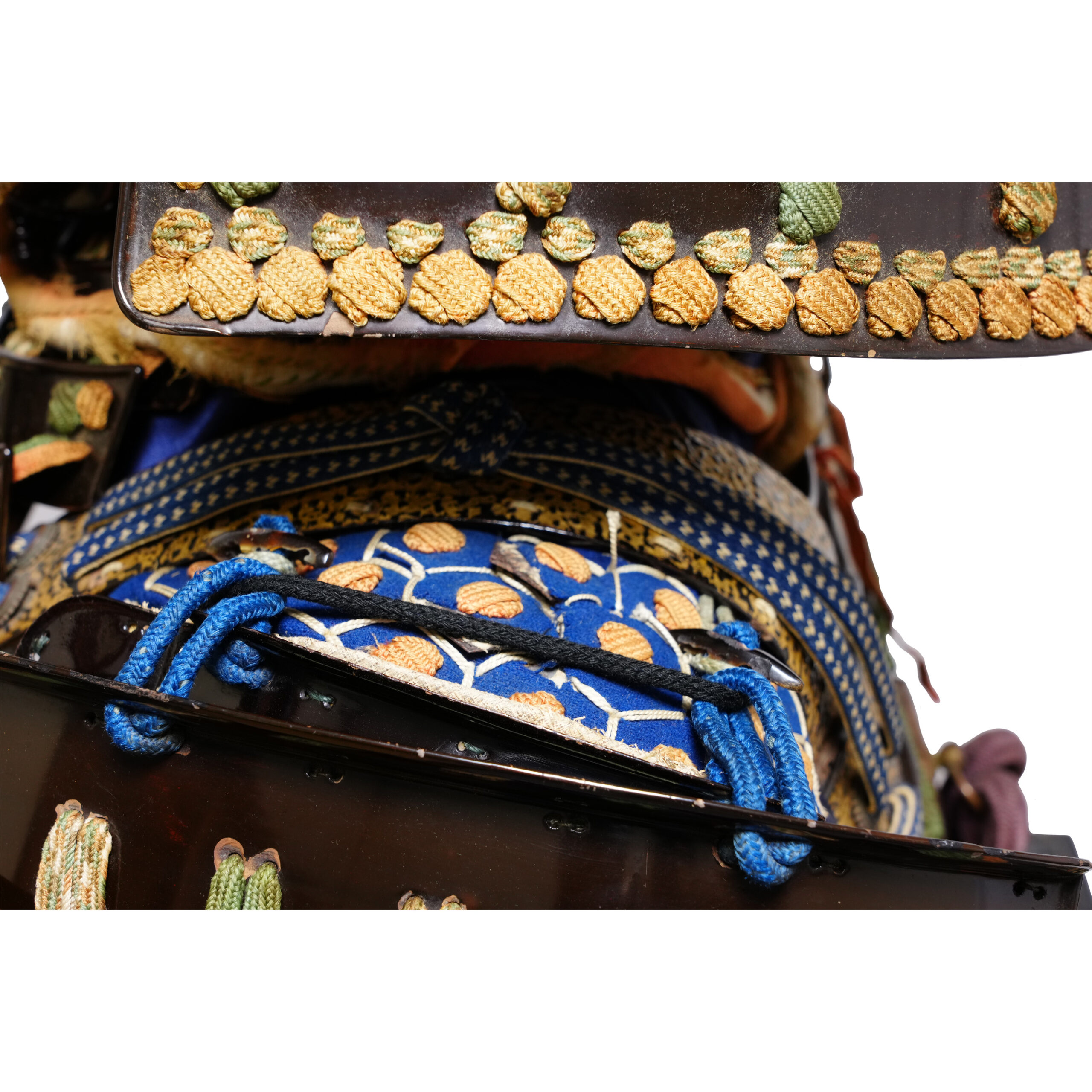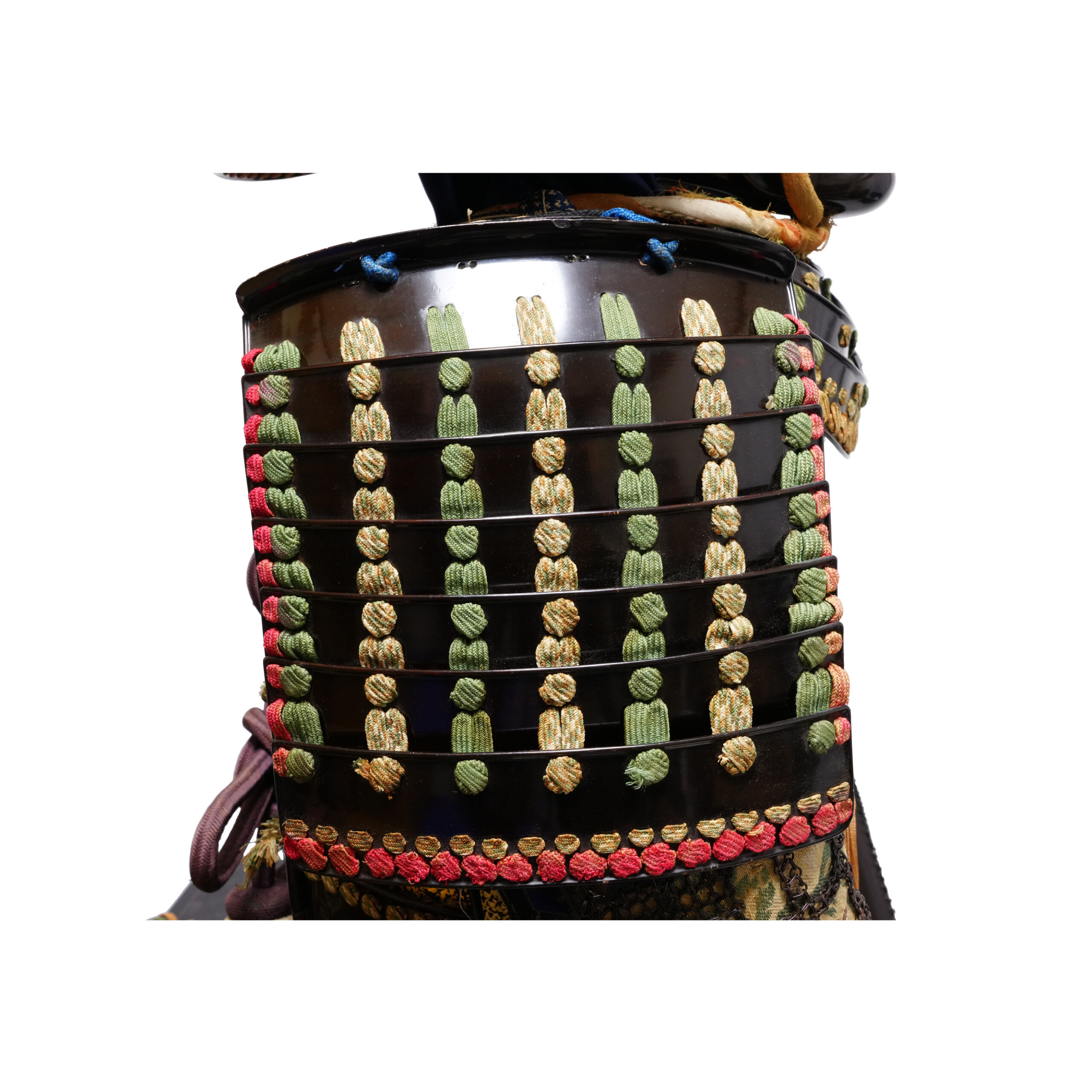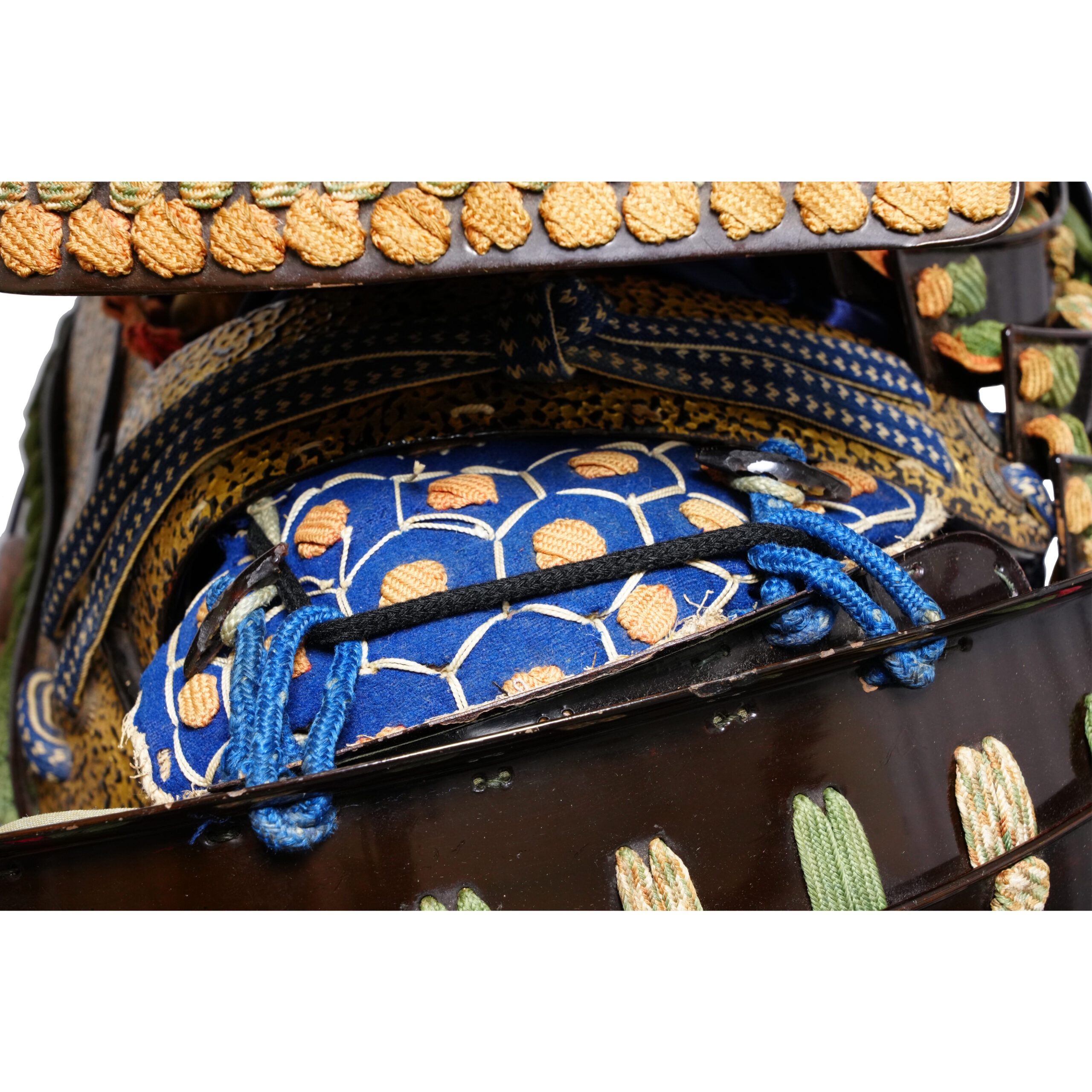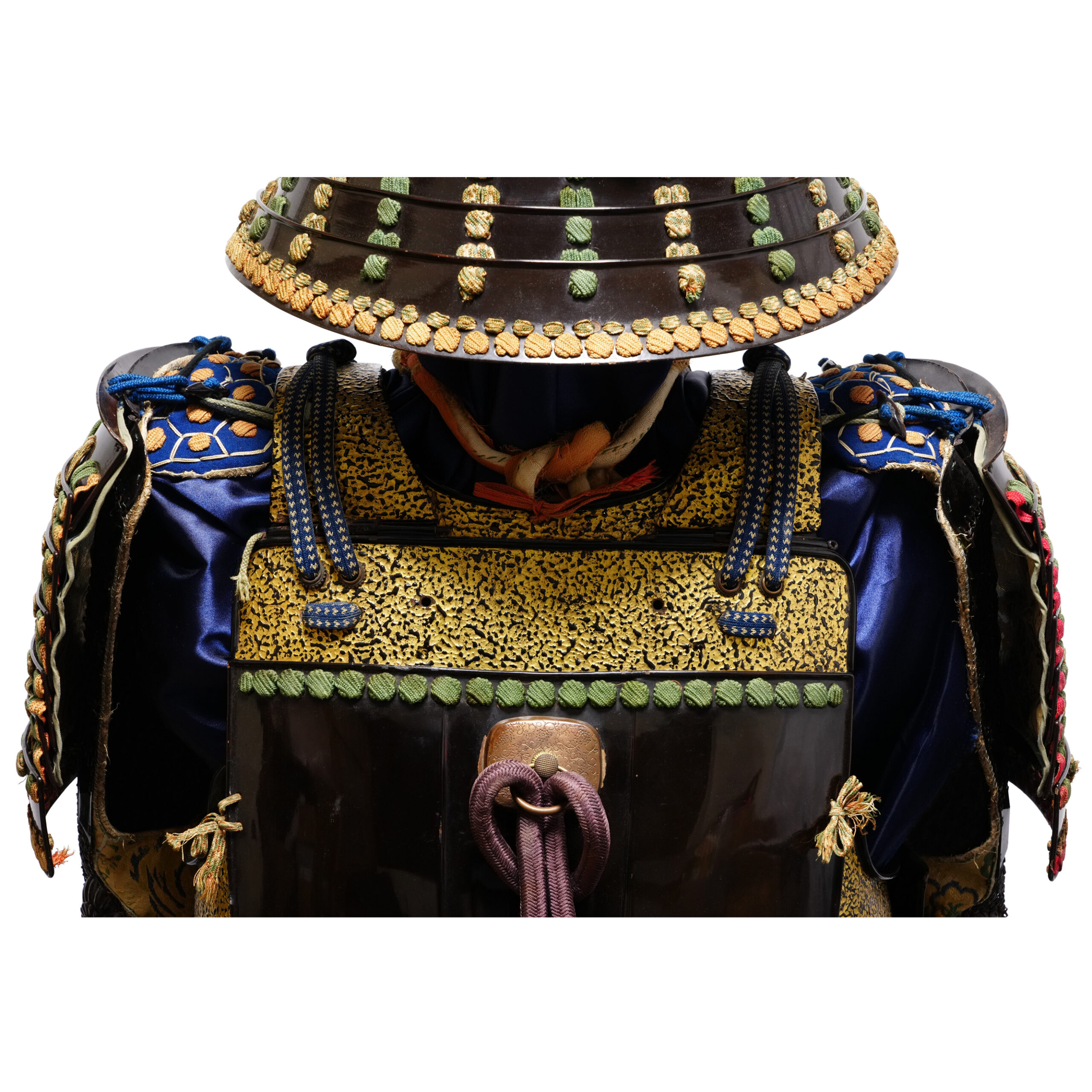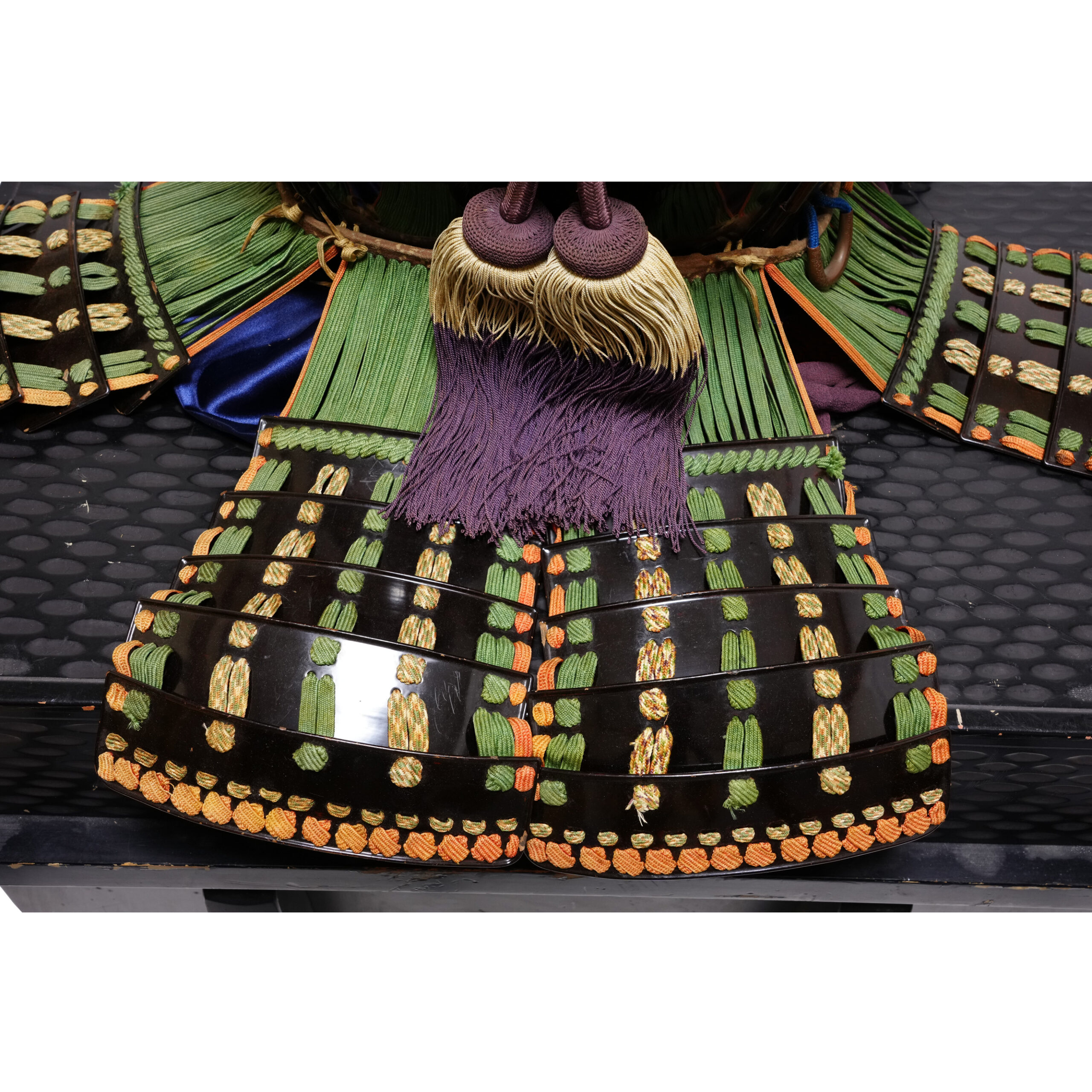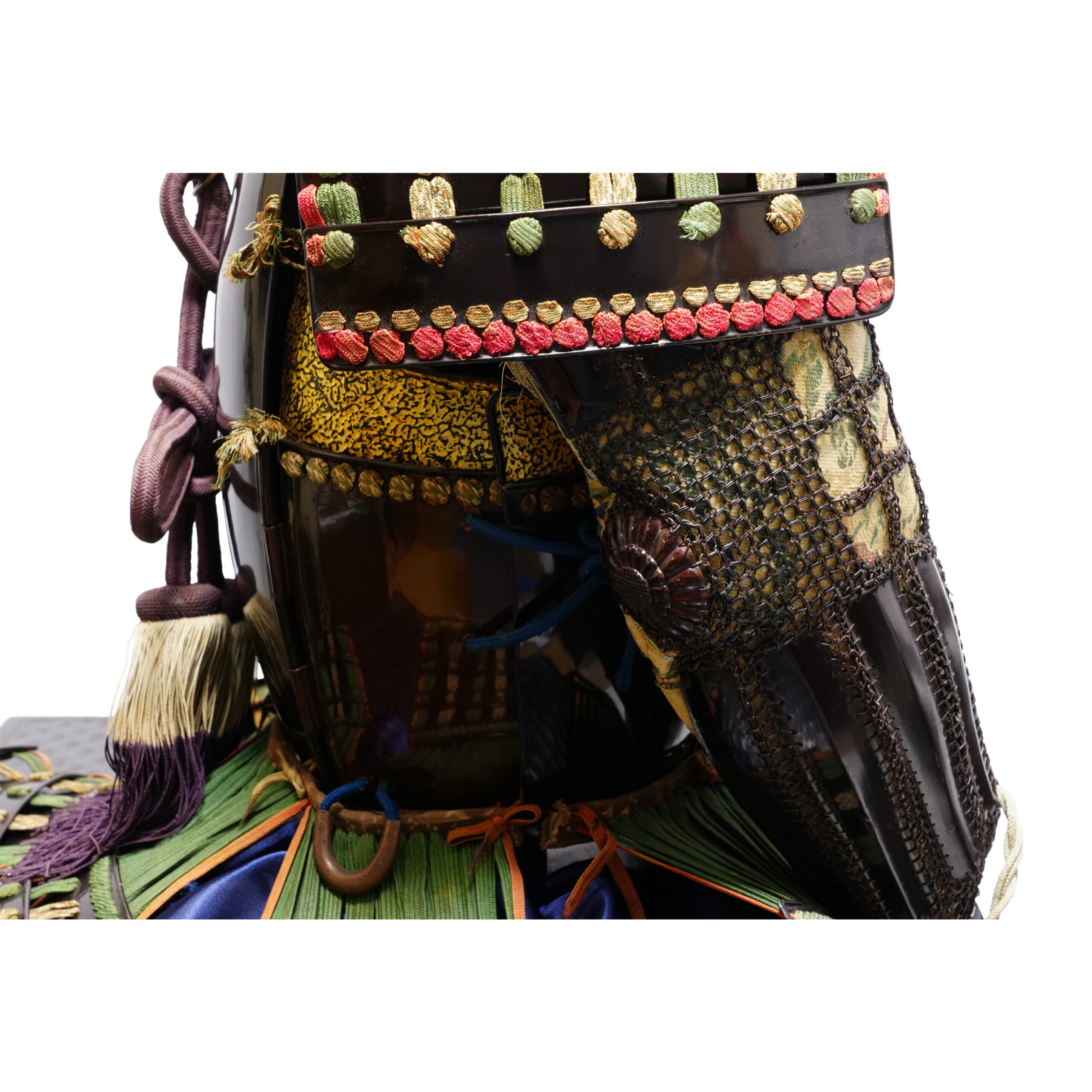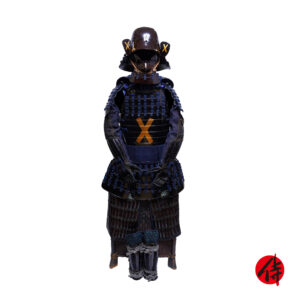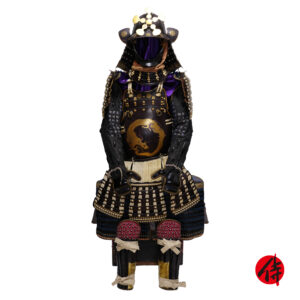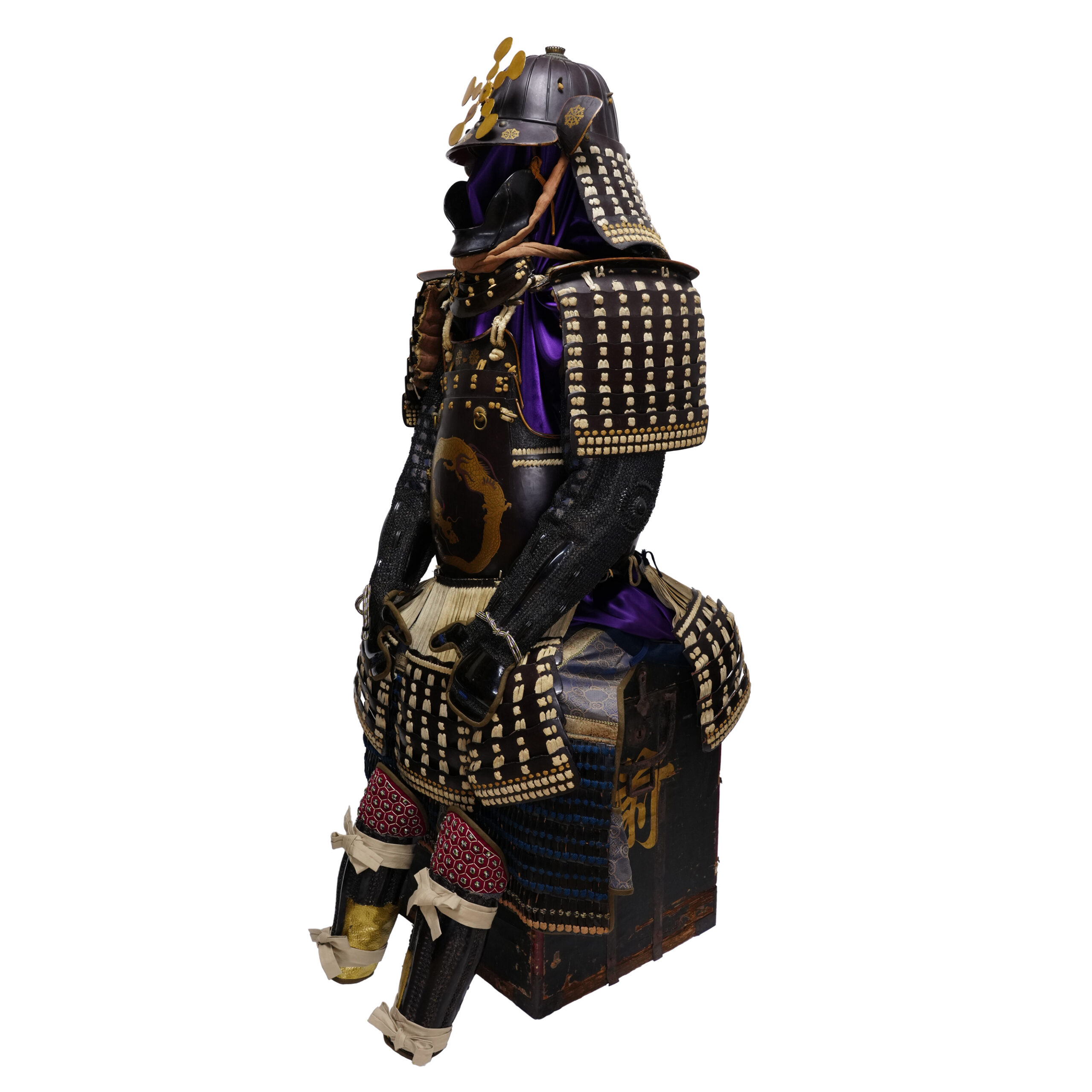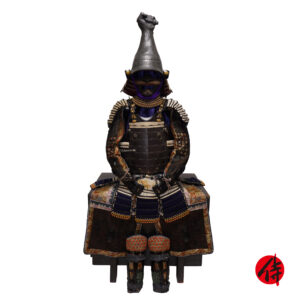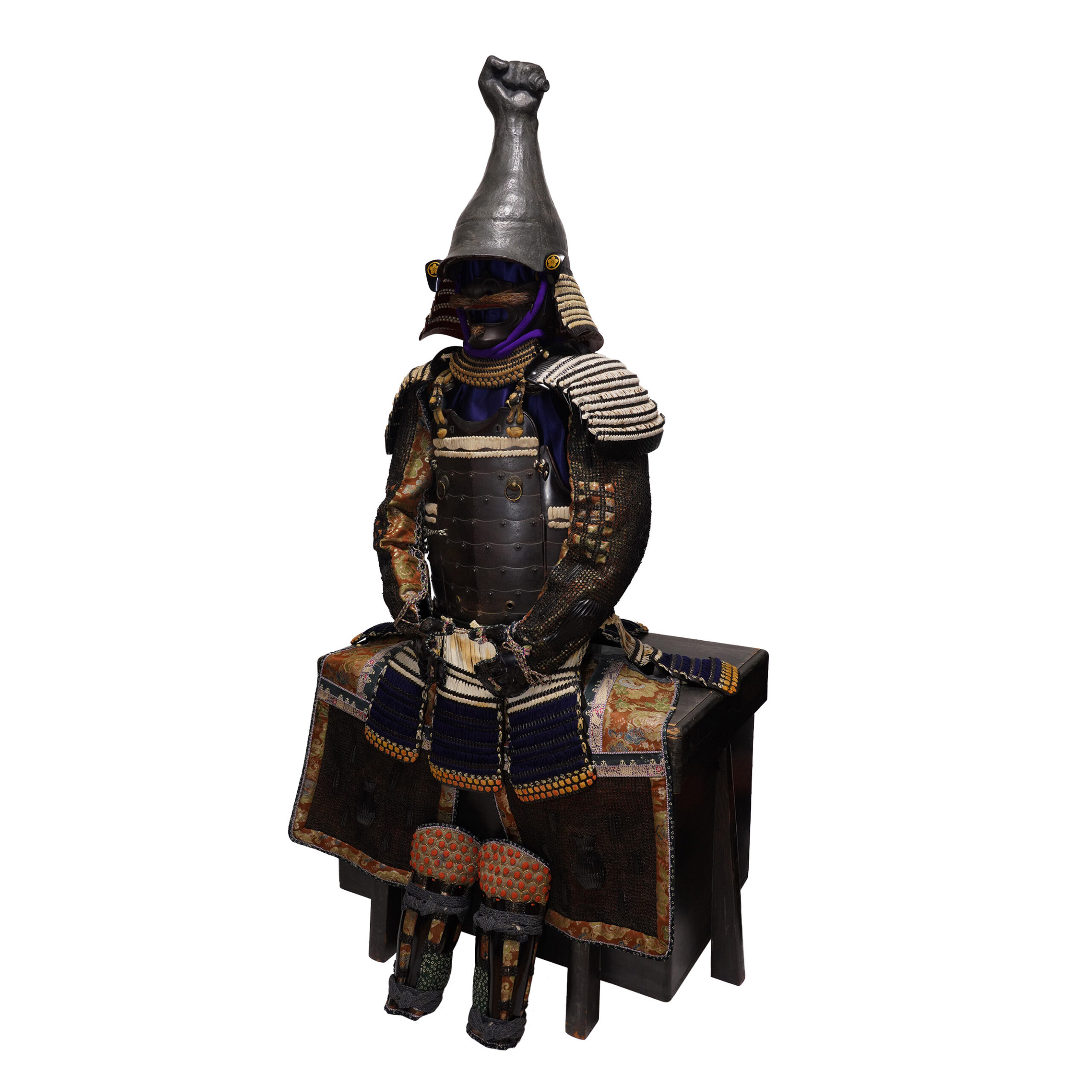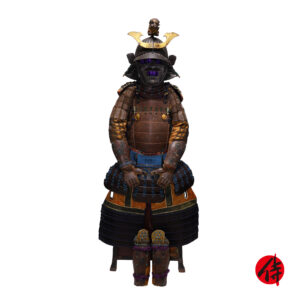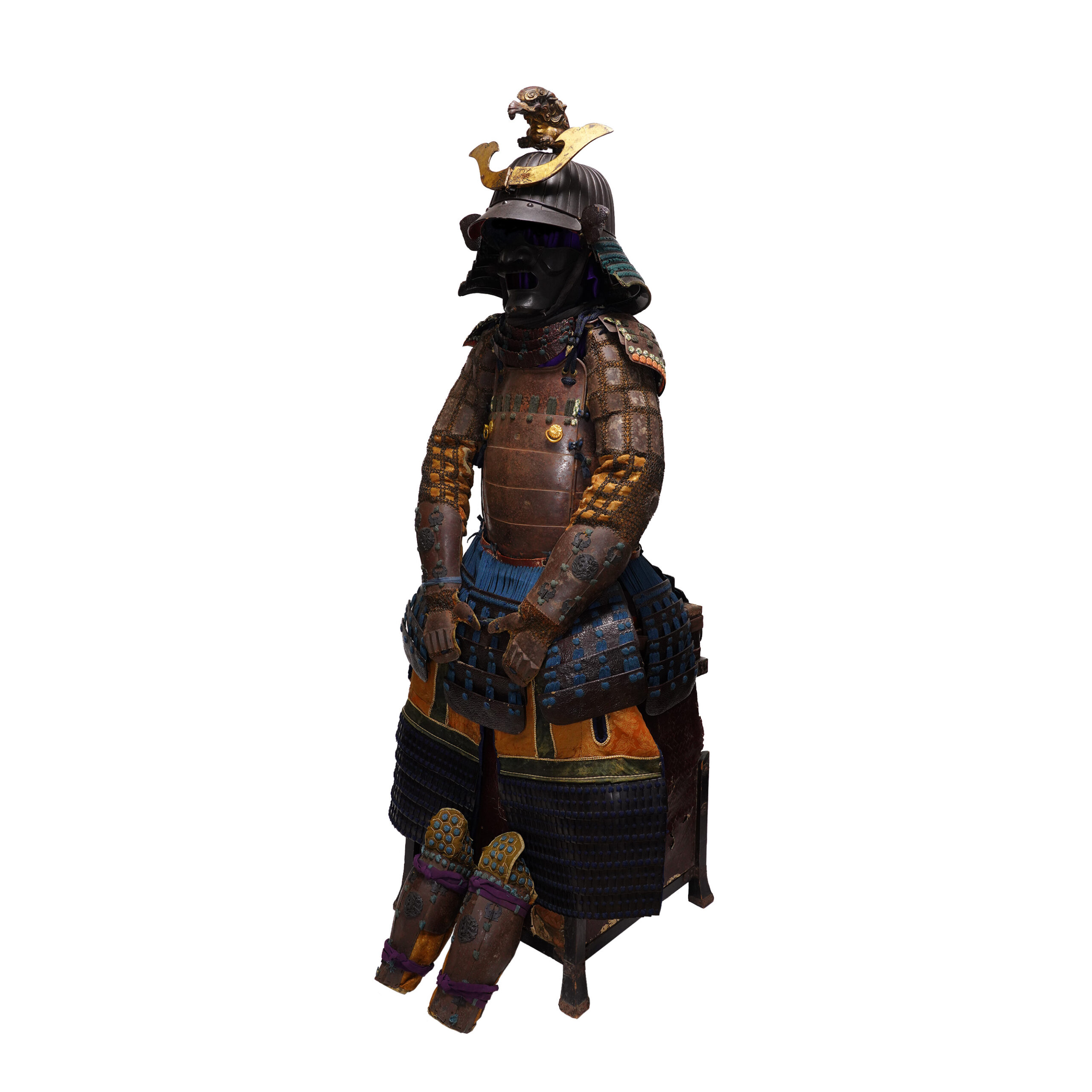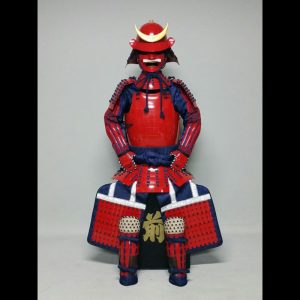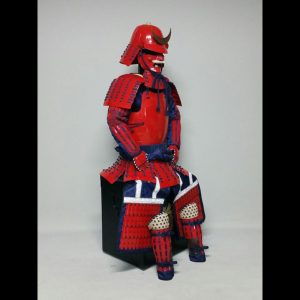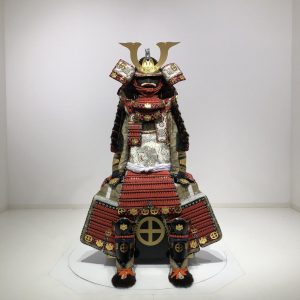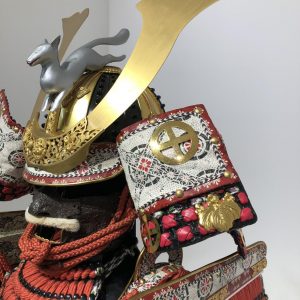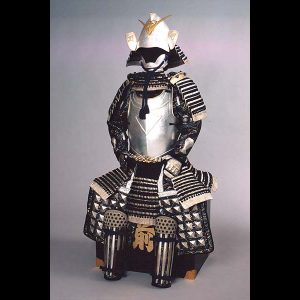Antique Late Edo Period Samurai Armor Tokubetsu Kicho Shiryo Certificate (A-30)
Period: Late Edo Period
appraised by The Association for the Research and Preservation of Japanese Helmets and Armor
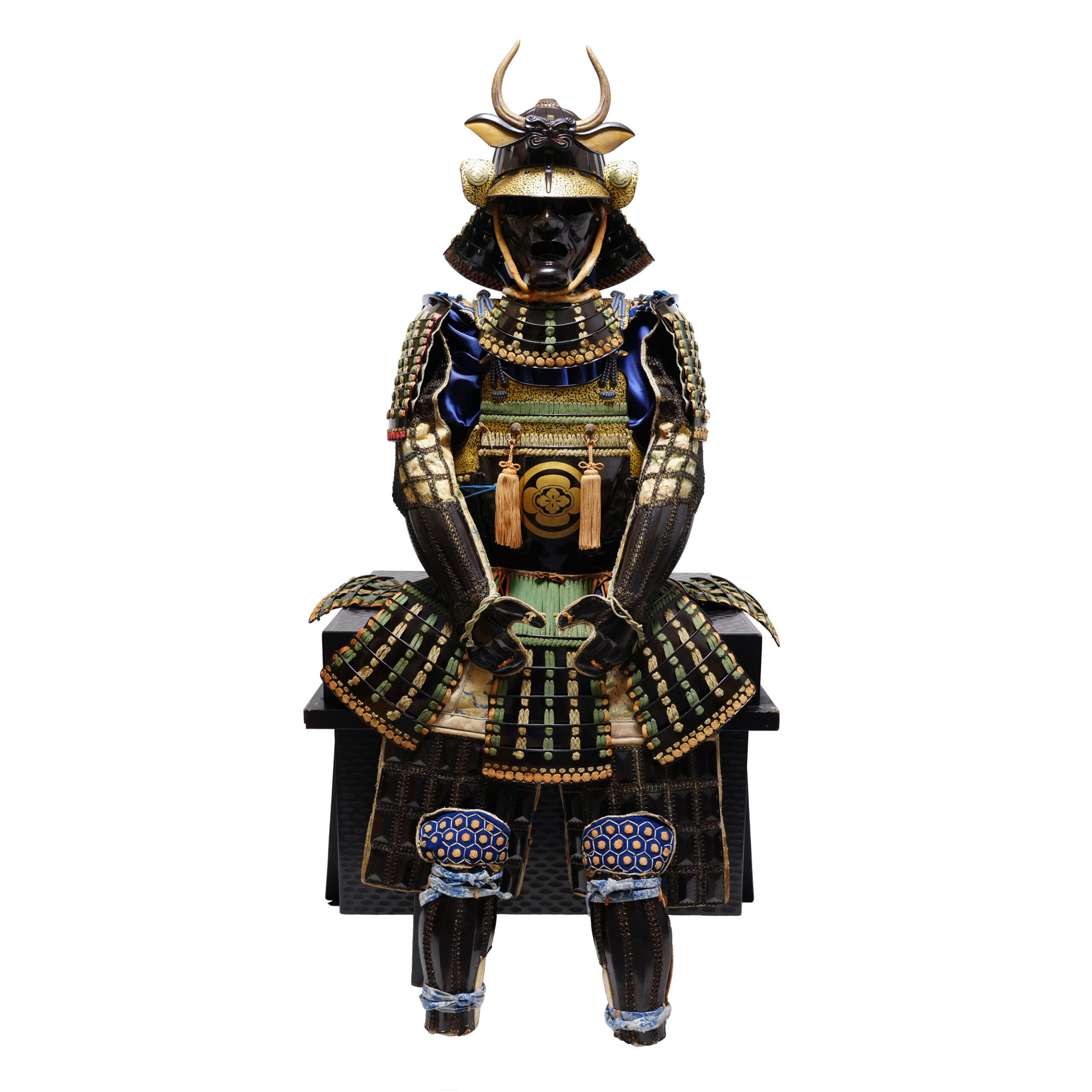
Kabuto (helmet)
■Helmet bowl: Suji Kabuto
The Kabuto (兜, helmet) is a protector for the head. When people started using the Kabuto, it was initially designed for practical use. However, the principal purpose of its design has changed with time; Samurai warriors tried to express their dignity, personality, or religion by wearing the characteristic designed Kabutos. According to a theory, these uniquely designed Kabutos were made from the late Muromachi (室町後期, 1467-1573) to the Edo period (江戸, 1603-1868). This type of Kabuto is categorized as the Kawari Kabuto (変わり兜), and a variety of materials were used to create them. For example, animal fur, seashells, plants, and paper were used as materials for decoration.
Here we would like to introduce to you a little bit more about the history of Kabutos. Before the Kawari Kabuto’s production, the Suji Kabuto (筋兜) appeared during the Nanbokuchou (南北朝, 1337-1392) period. At that time, the tactic was gradually changed from the piggyback fight style to battle with the Tachi (太刀) sword and the Naginata (薙刀, Japanese halberd) on the ground. Therefore, there was a rise in demand for the weight-saving of the Kabuto. Also, in order to turn the attack by swords, a new type of structure was invented: the Suji Kabuto (筋兜). Its form slides swords’ attacks when weapons hit the Kabuto. It is said that the production of the Suji Kabuto prospered in the Muromachi (室町, 1336-1573) period. We estimate this Kabuto is one of these Suji Kabutos made in that tendency in the Edo period. It has 16 stripes in this Kabuto, meaning 16 small iron plates are connected. It is called Ju Rokken Suji Kabuto (十六間筋兜). Ju Roku means 16 in Japanese. The surface of its metal is painted with black lacquer.
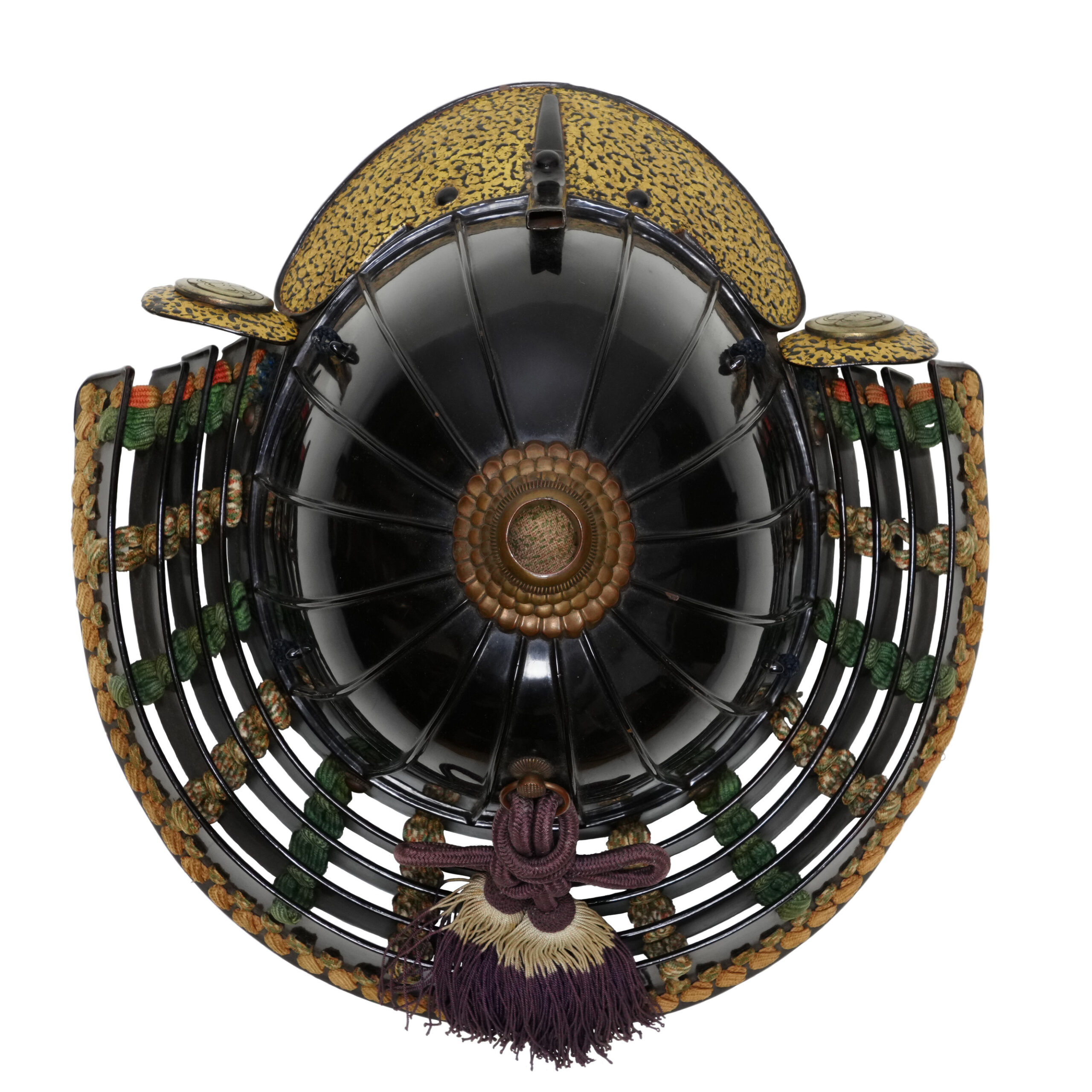
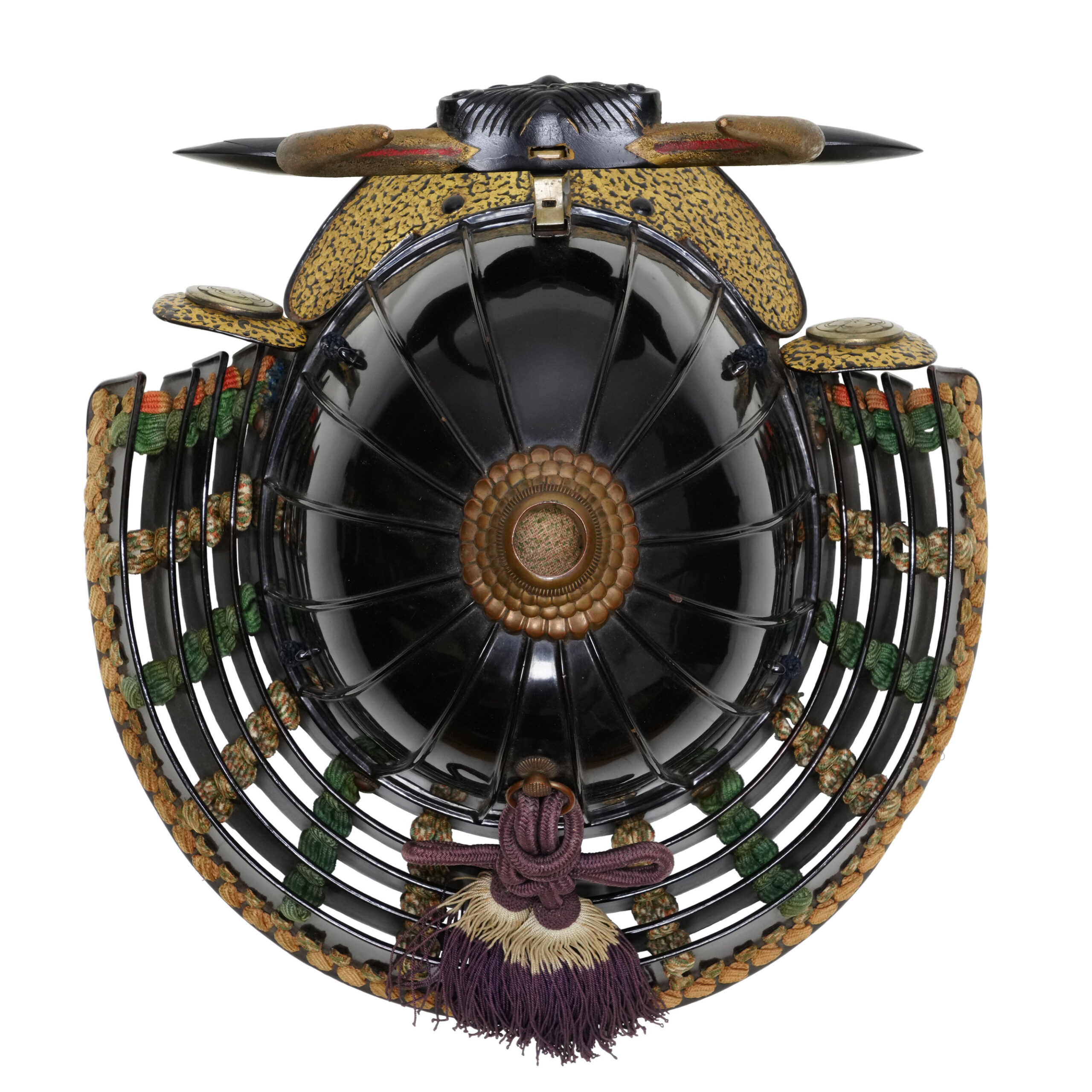
■Shikoro (side neck guard):
Iron plates laced with green, vermillion, and white threads.
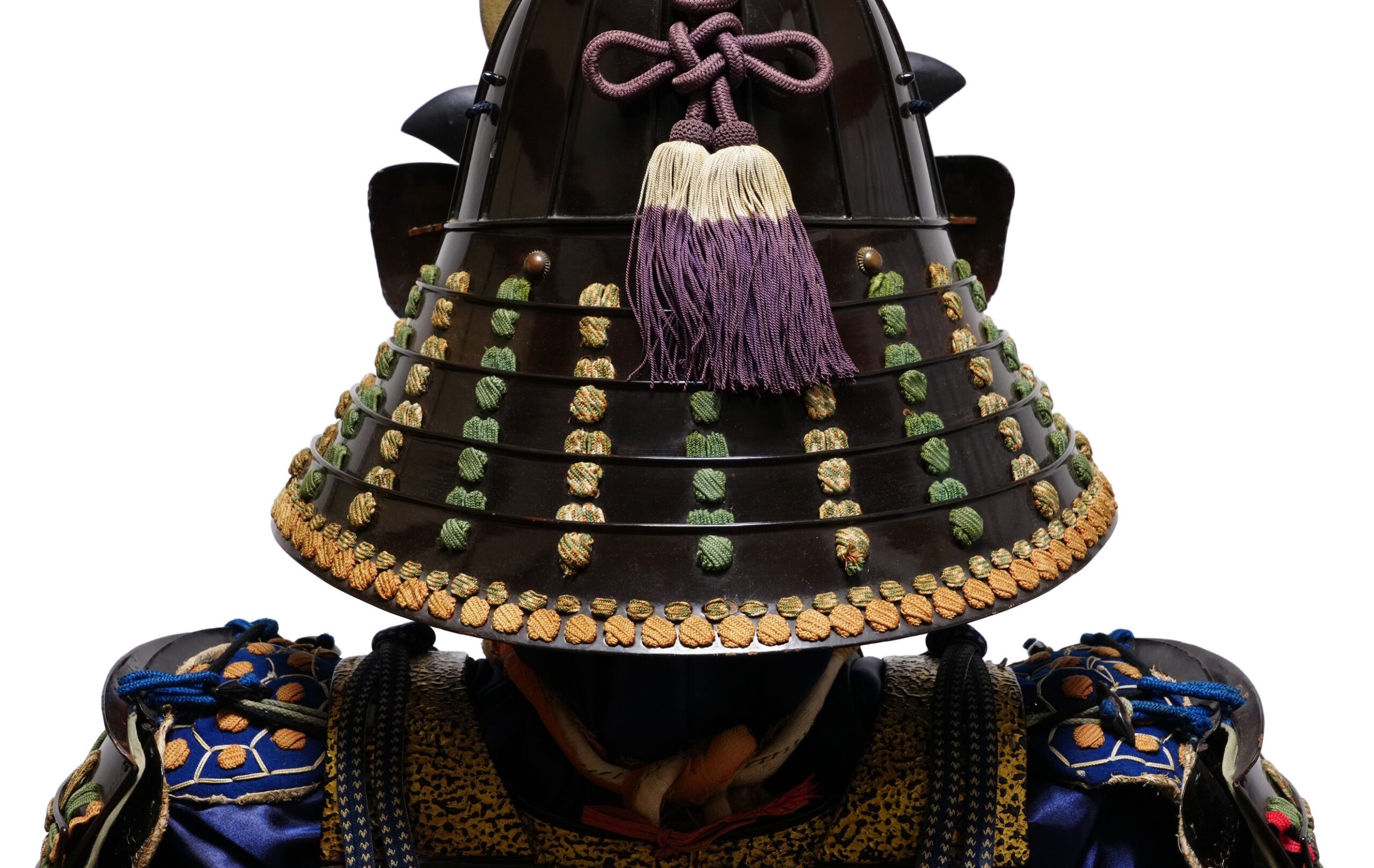
■Fukikaeshi (side neck guard): Maru-ni Mokkou
The Fukikaeshi (吹き返し) is both ends of a Kabuto. It protects the face from swords and also shows its beautiful workmanship. Family crests are sometimes designed on this part, as seen on this Kabuto. The Fukikaeshi of this Kabuto is decorated with a golden mark. This design is called the Maru-ni Mokkou Mon (丸に木瓜紋), which is categorized in the Mokkou Mon (木瓜紋). Mokkou Mon is a pattern that has been depicted on a Mokou (帽額, cloths for decorating the hanging edge of the curtain and blinds). According to a theory, the Mokkou was named after the name of this silk cloth made of silk, “帽額 (Mokou).” Another view says that it was modeled after the cut end of a Boke (木瓜), which is a plant of the rose family. The Mokkou pattern is one of the five major family crests used in many houses. As a design to pray for the prosperity of descendants, it is speculated that many people favored its good omen.
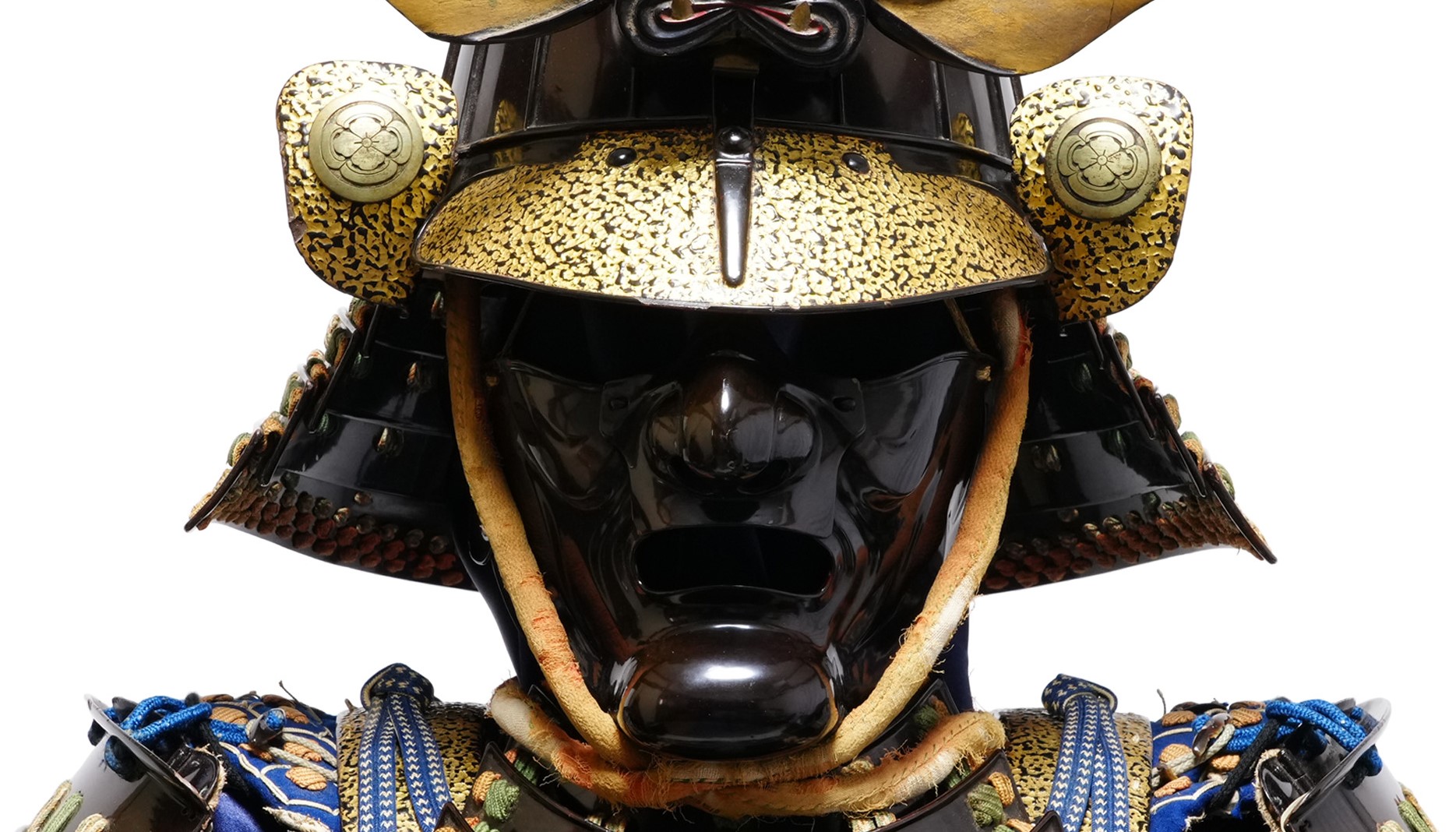
■Menpo (face guard): Ressei Menpo
This type of Menpo is called the Ressei Menpo (烈勢面頬). It represents the angry face to intimidate enemies. There are many types of Menpo, depending on their shape or appearance. The purpose of Menpo was not only to protect Samurai’s face. But also to hide their true faces so that their psychological states were not affected.
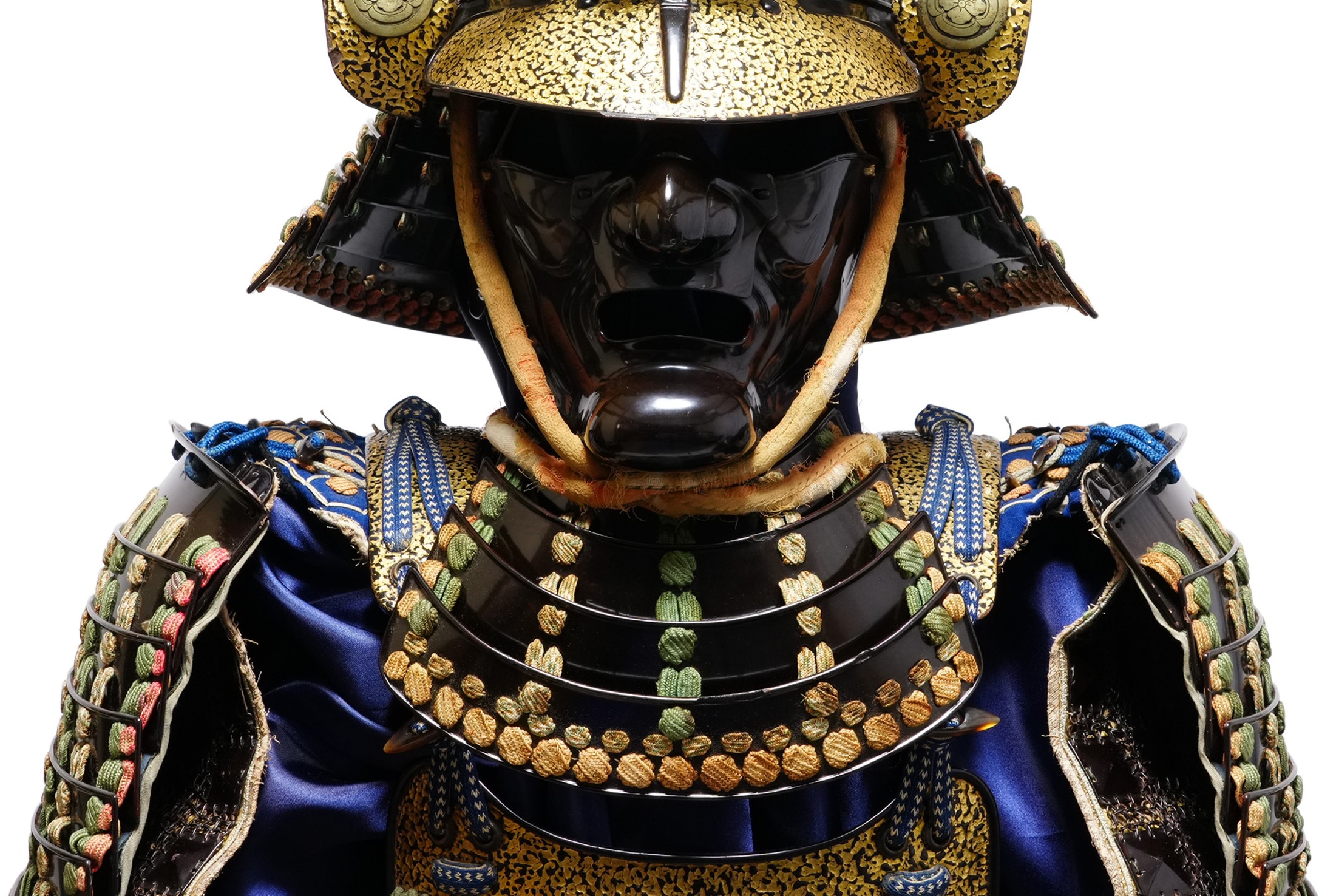
■ Maedate (Front decoration): Shikami/Shigami
We believe the motif of this Maedatemono (前立物, front decoration) is the Shikami/Shigami (獅噛). The name Shikami/Shigami comes from the word “顰 (pronounced as Shikami).” It refers to a terrifying Oni (鬼) mask with raised eyebrows, an open mouth with fangs bared, or a frowning Oni or lion mask. The Oni is a kind of monster and is often depicted as the following figure: a human body with horns and fangs. They are usually harmful to people but sometimes helpful. It is because Onis are not just monsters but are imagined in various forms, such as vengeful spirits of humans, legendary gods, Yōkai (妖怪, monster/ghost), and spiritual beings, and their definitions differ depending on the scene in which they appear. Now, please look at this Maedatemono. It has a grim angry facial expression, and its long horns and large ears make it a virtuous enemy. Even a young Samurai would have been intimidated by the enemy from a distance if he wore a Kabuto with this decoration.

Armor
■Dō (cuirass): Gomai Dō
Gomai Dō is a kind of cuirass for Tousei Gusoku (当世具足, developed armor style). Gomai Dō (五枚胴) was named after the fact that Gomai (五枚) means five plates and Dō (胴) means torso in Japanese. Instead of using a large number of small lamellar plates called Kozane (小札), this cuirass used large iron plates riveted.
If you focus on its front, you will find the same family crest designed on the Fukikaeshi mentioned above.
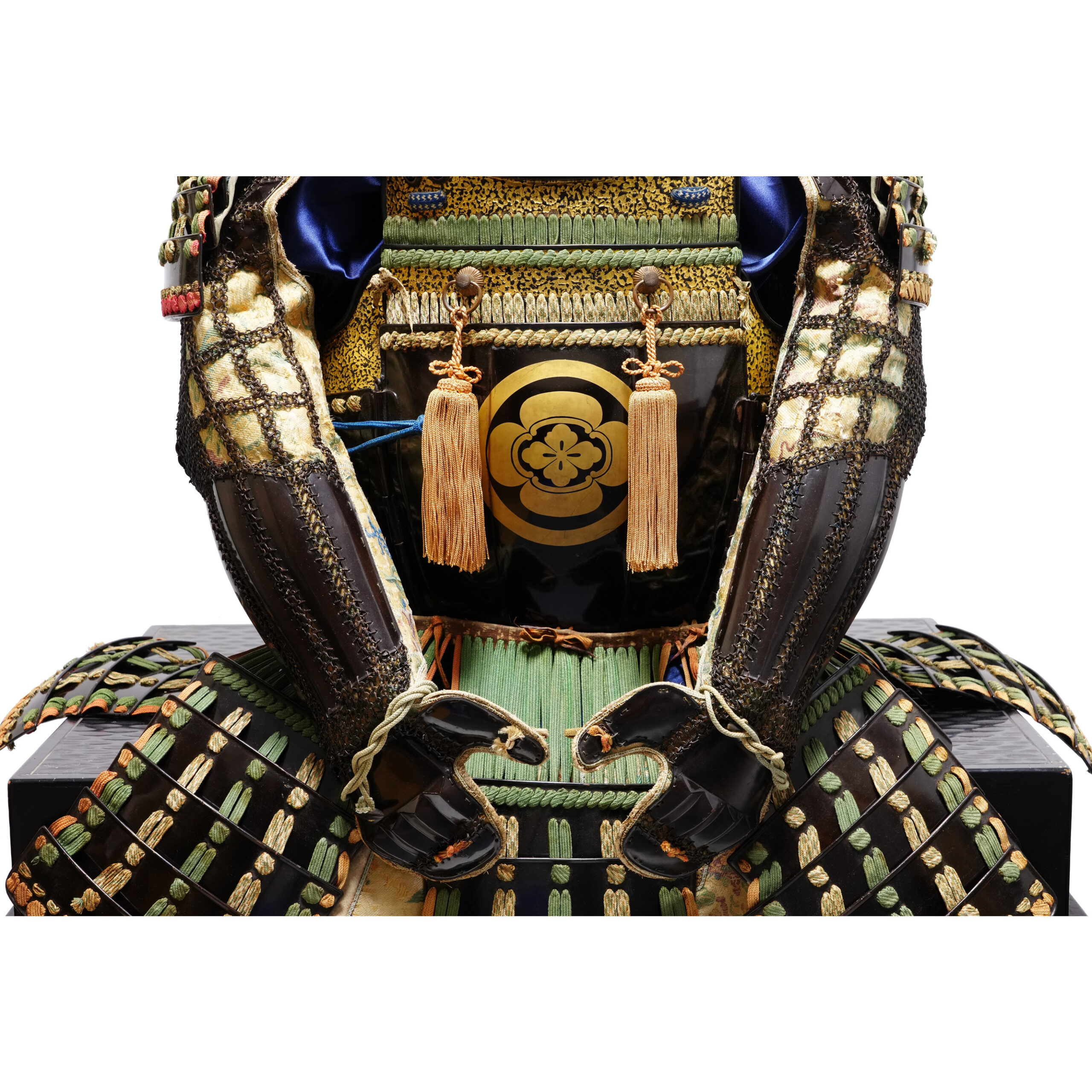
■Kusazuri (skirt of plates attached to the cuirass):
Lacquered iron Kusazuri laced with green, vermillion, and white threads. The pictures below show that some Kusazuris have portions where the metal surface is partially peeled off. However, the cords for the Odoshi (縅, a technique for armor tying boards together with cords such as leather or thread) are relatively in good condition, so each plate is tied without coming off.
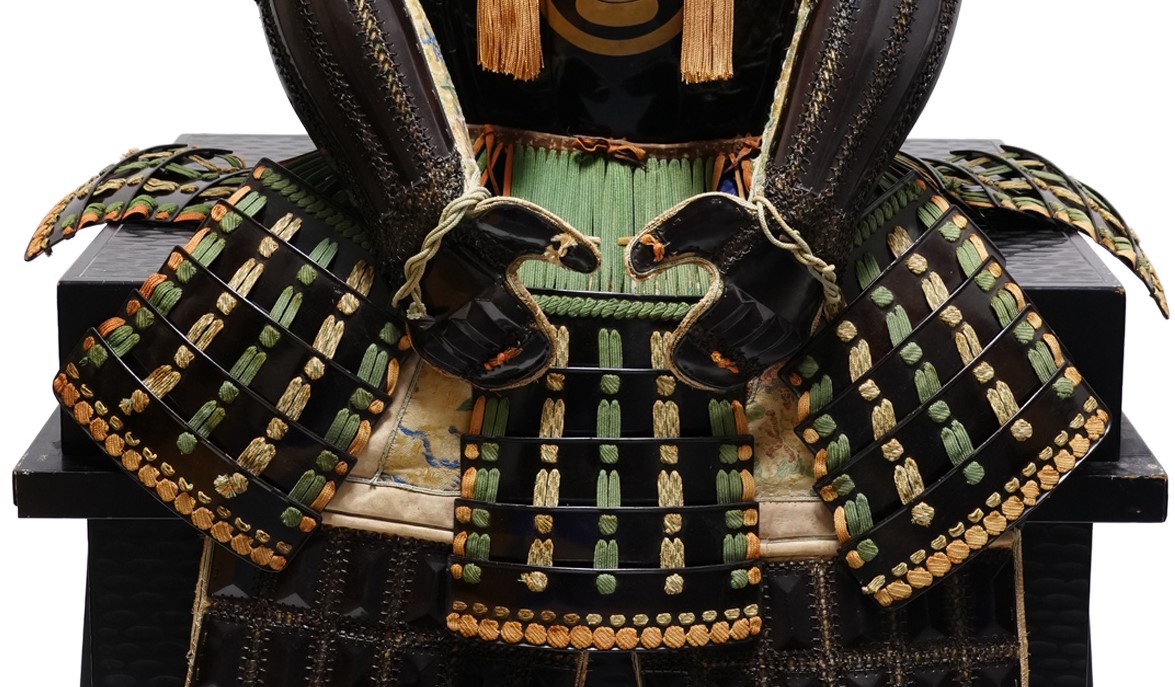
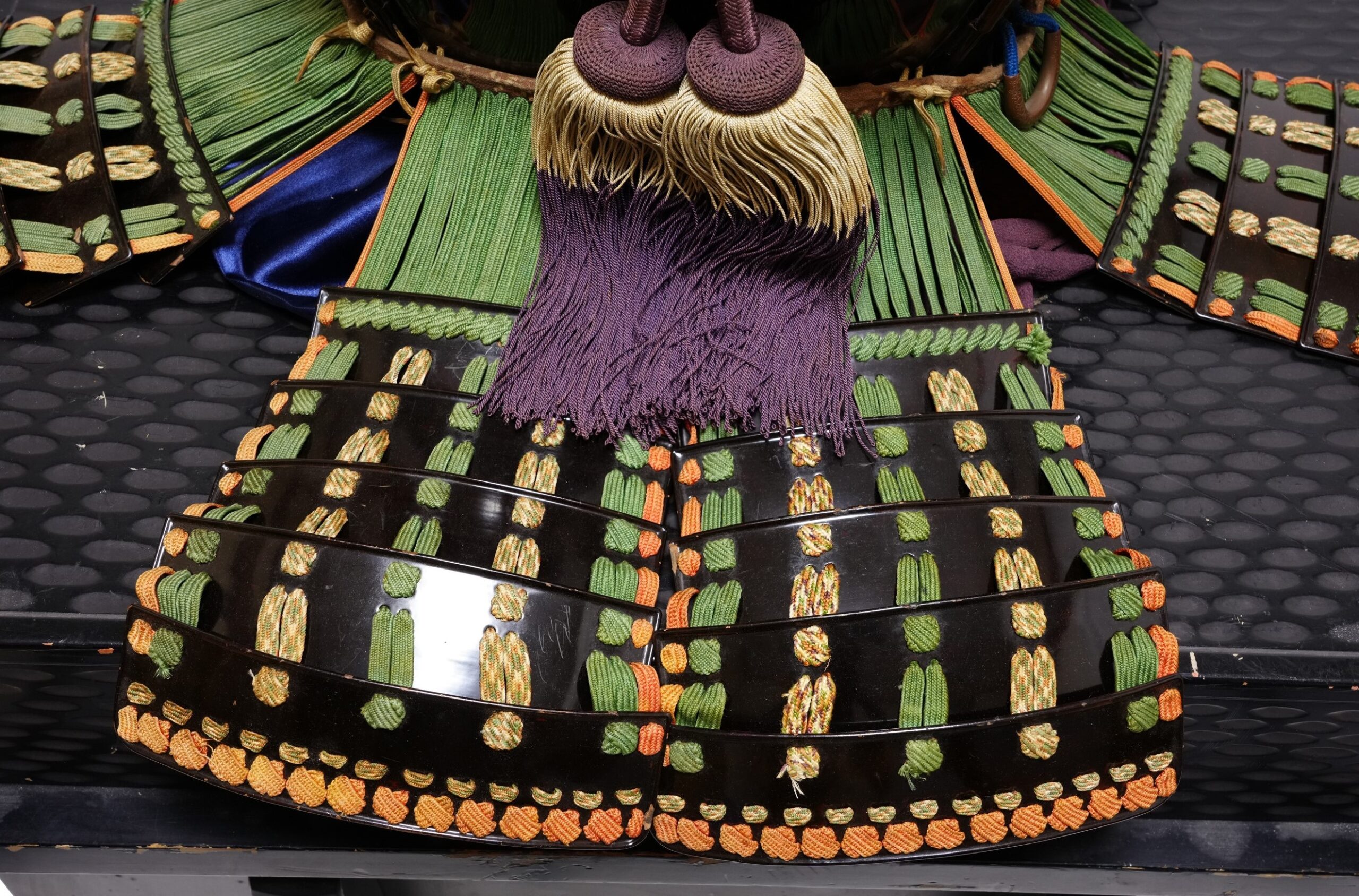
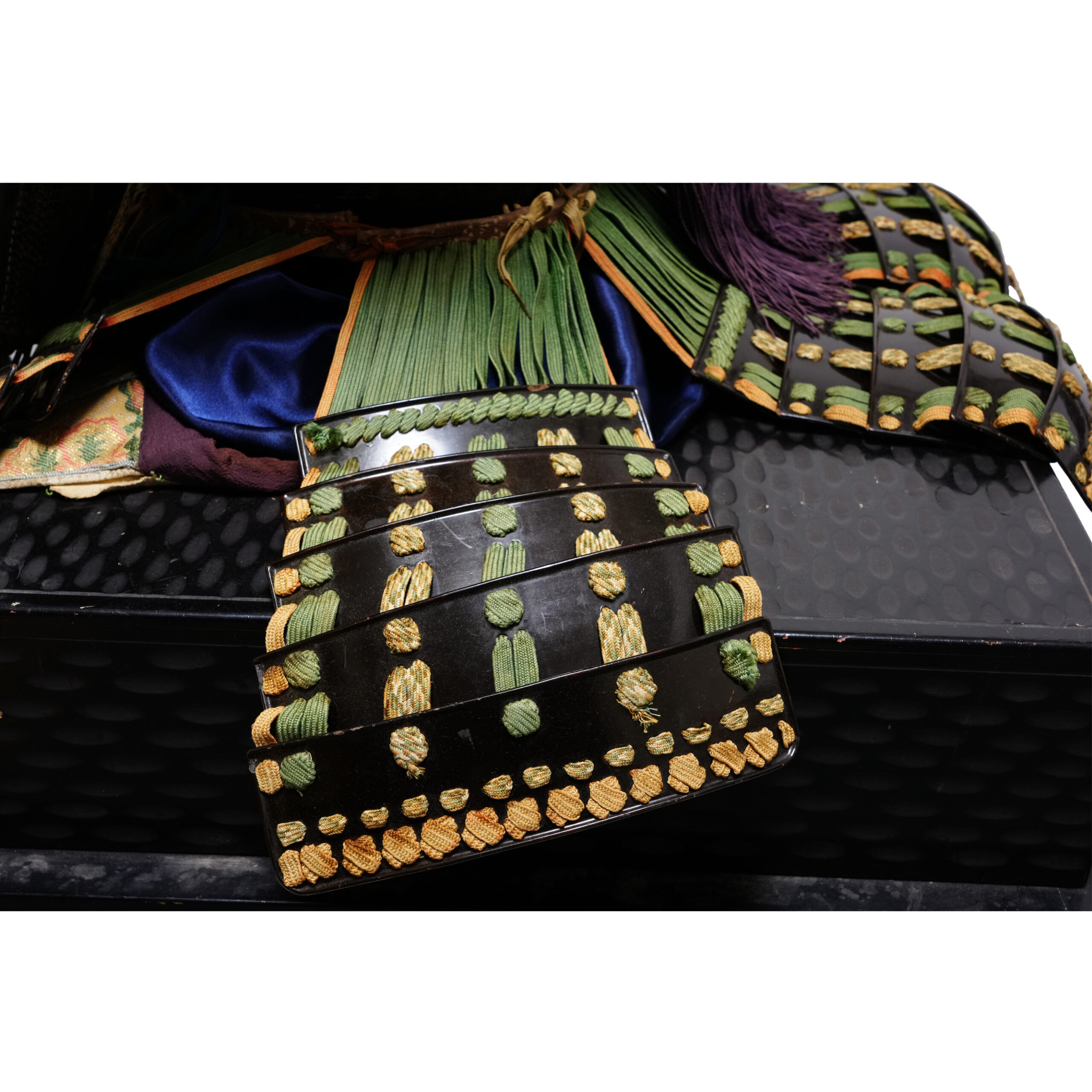
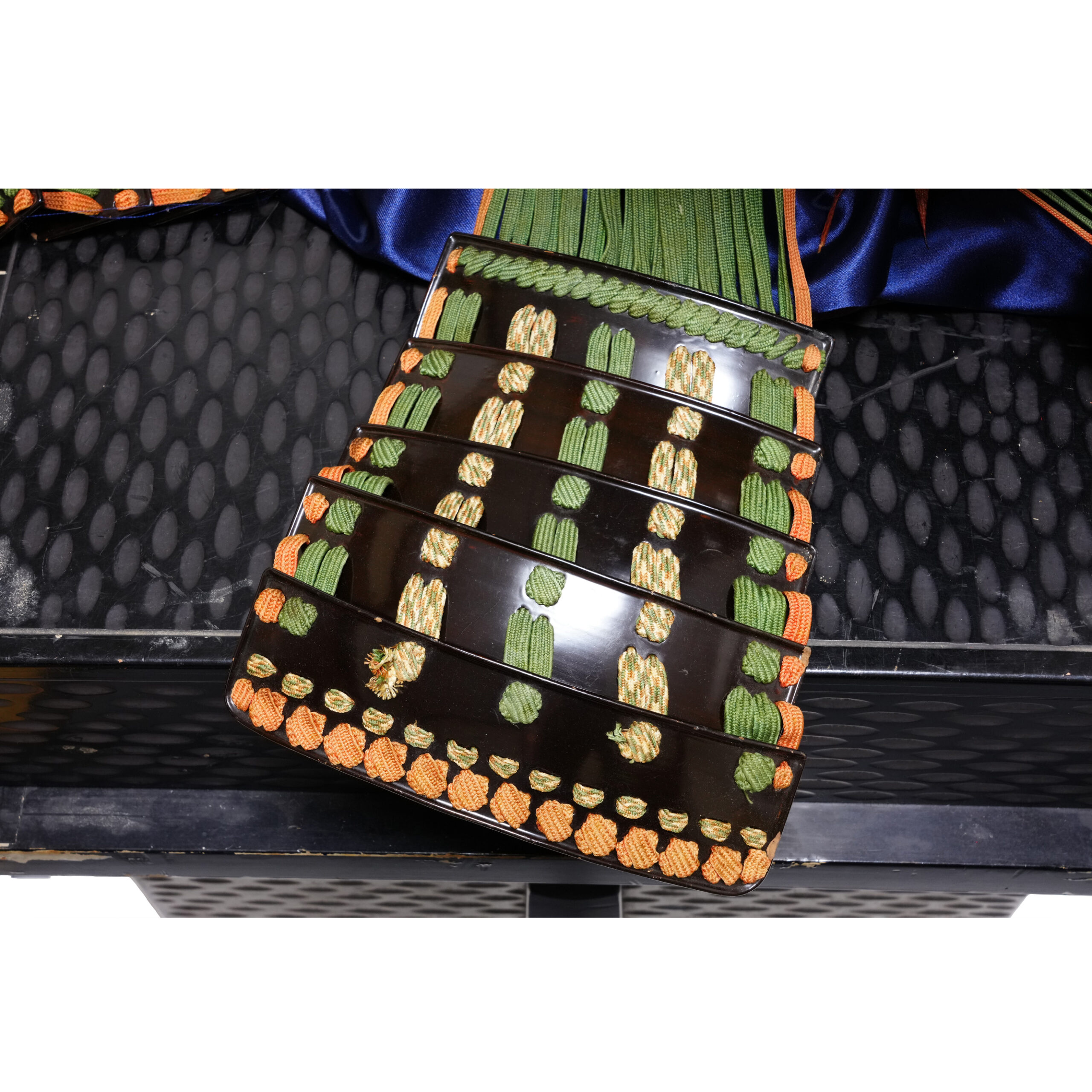
Small parts
■Kote (armored sleeves):
Intricate iron chain mail with silk.
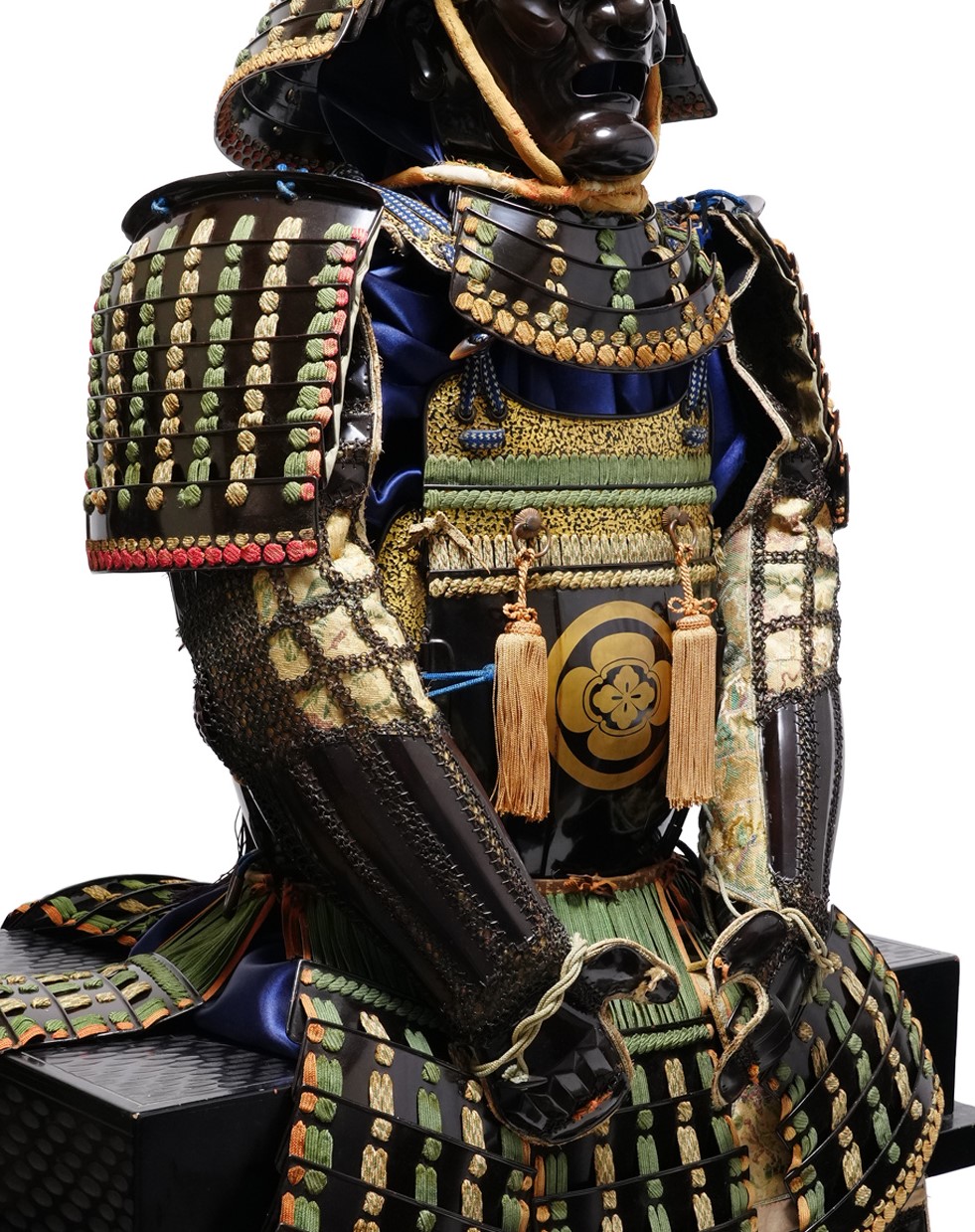
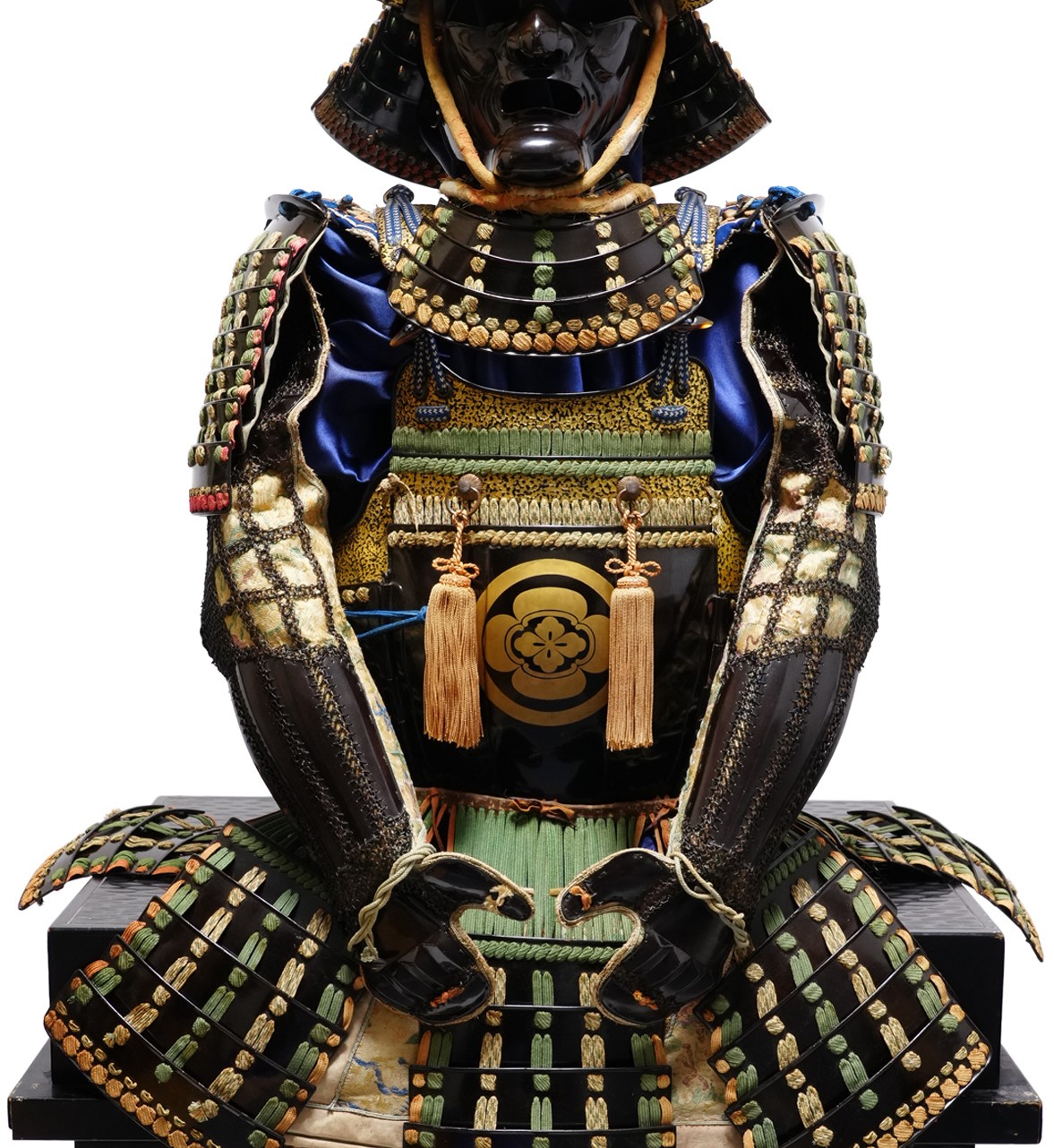
■Haidate (thigh protection):
The Haidate (佩楯) is a thigh guard. Chain mail and iron plates are attached to its cloth.
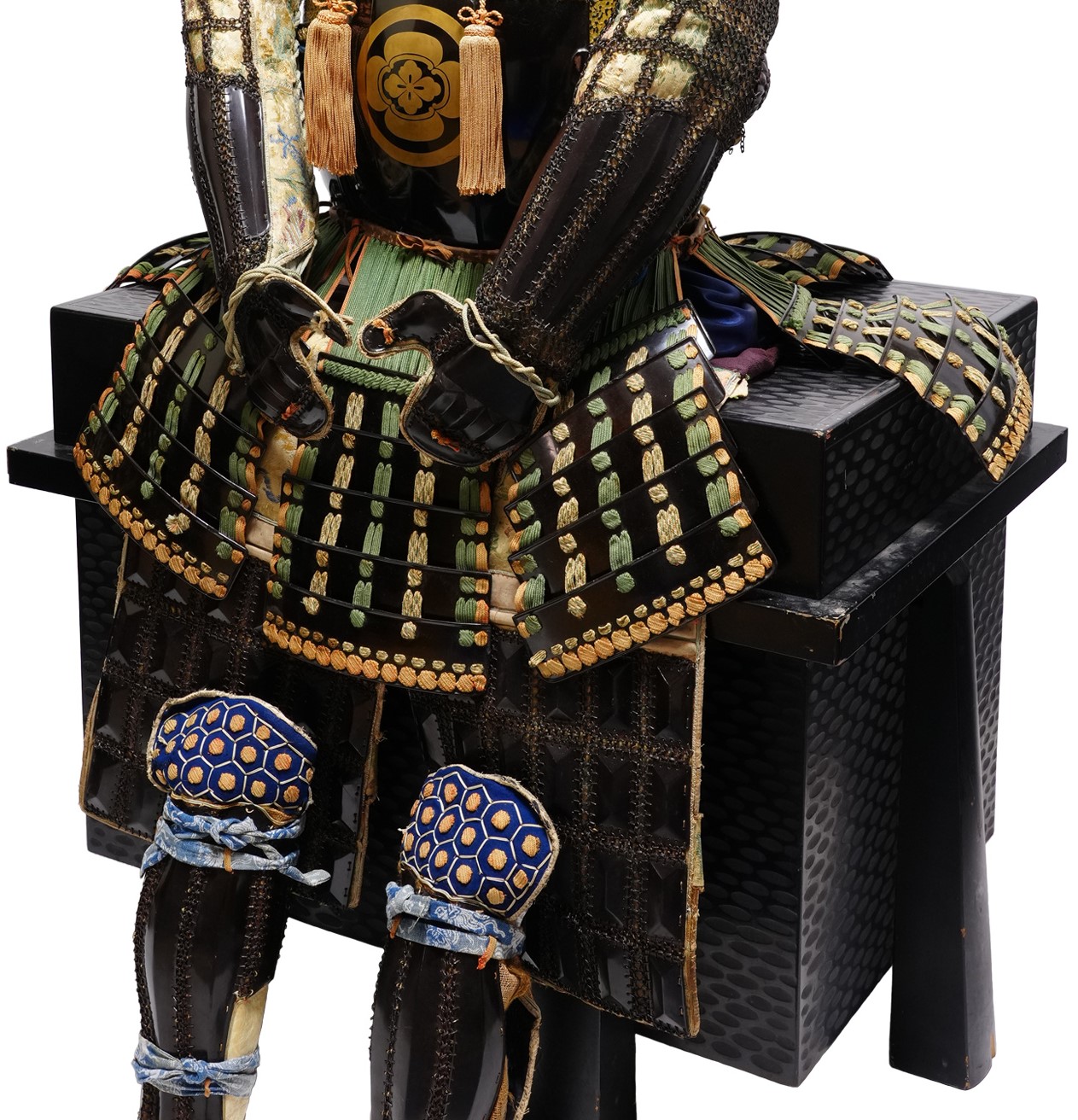
■Suneate (shin guard):
The Kikkou (亀甲, turtle’s shell) pattern is used for the cloth of the Suneate (脛当). It is a continuous geometric pattern connecting regular hexagons up and down. A theory says that this design was brought from China and the Korean Peninsula during the Asuka (飛鳥, 592-710) and Nara (奈良, 710-794) periods. A proverb says turtles live long lives; therefore, turtle and turtle shell patterns represent longevity. In addition, as this continuous hexagonal pattern does not get out of its shape, it is said people wished for eternal prosperity by using this design.
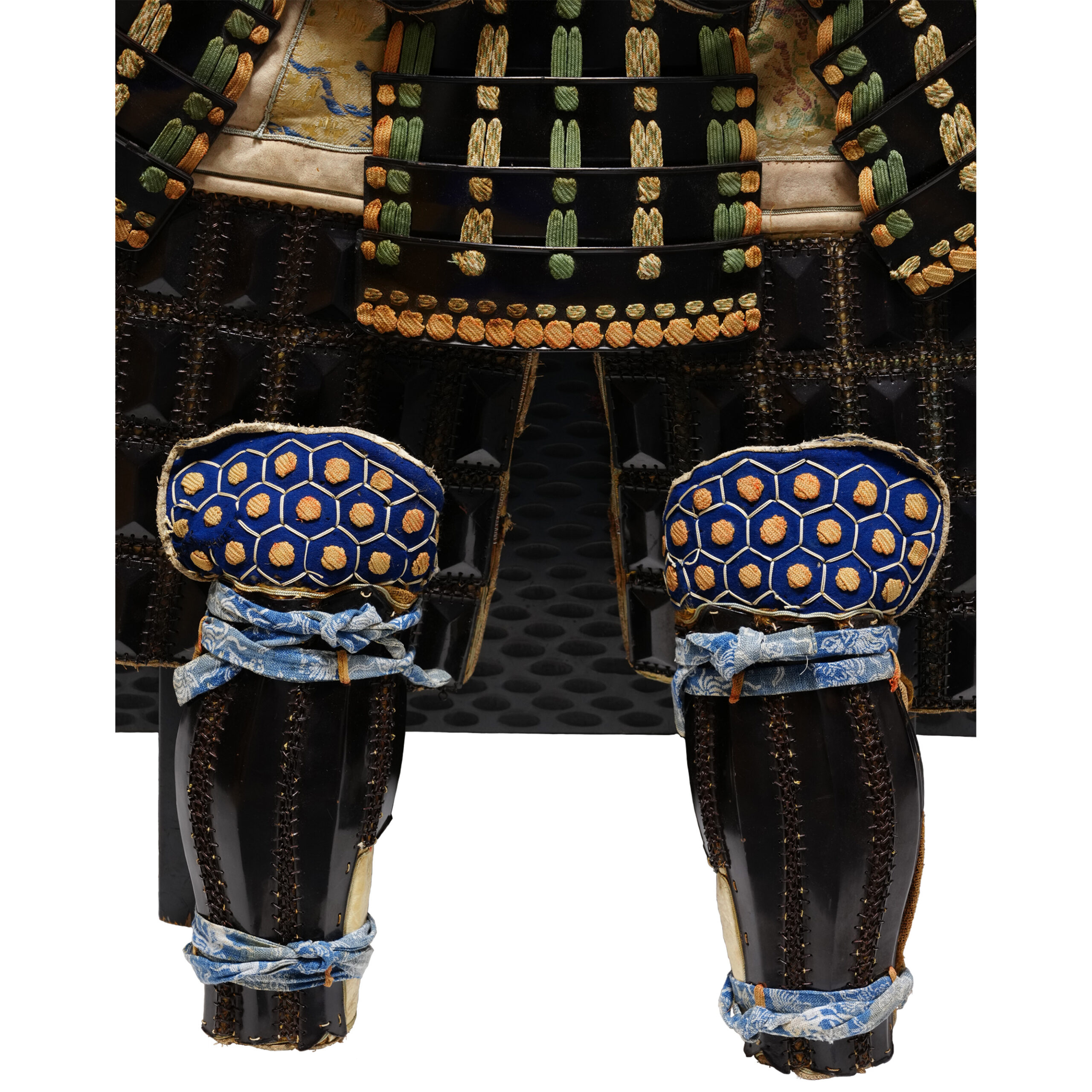
■Agemaki (decorative colorful laces with tufts):
If you focus on the back of this armor, you will find a cord tied in a dragonfly cross shape attached to the back of the Dō. This string is called the Agemaki (総角/揚巻). In order to expand the range of motion of the arm, it is said that this cord played a role in connecting and fixing the line attached to the sleeve parts. The Agemaki is a method of tying strings used in areas such as Sumo (相撲, sumō), Shinto (神道, a Japanese religion, literally means “the way of the gods”), and Ō-Yoroi (大鎧, a type of armor). And there are two types of this knot, one representing the shape of the character “入” and the other representing the shape of the character “人.” The “入” style is used when people hope to invite luck and treasure.
On the other hand, the “人” style has the meaning of protecting against evil spirits, misfortune, and danger and has been attached to armor such as the back of unprotected armor. We assume people wished that the character “入” means let people come in, and “人” means win (overcome) people. Although they are very similar, even the way they are tied has meaning and is incorporated into the decoration of this armor.

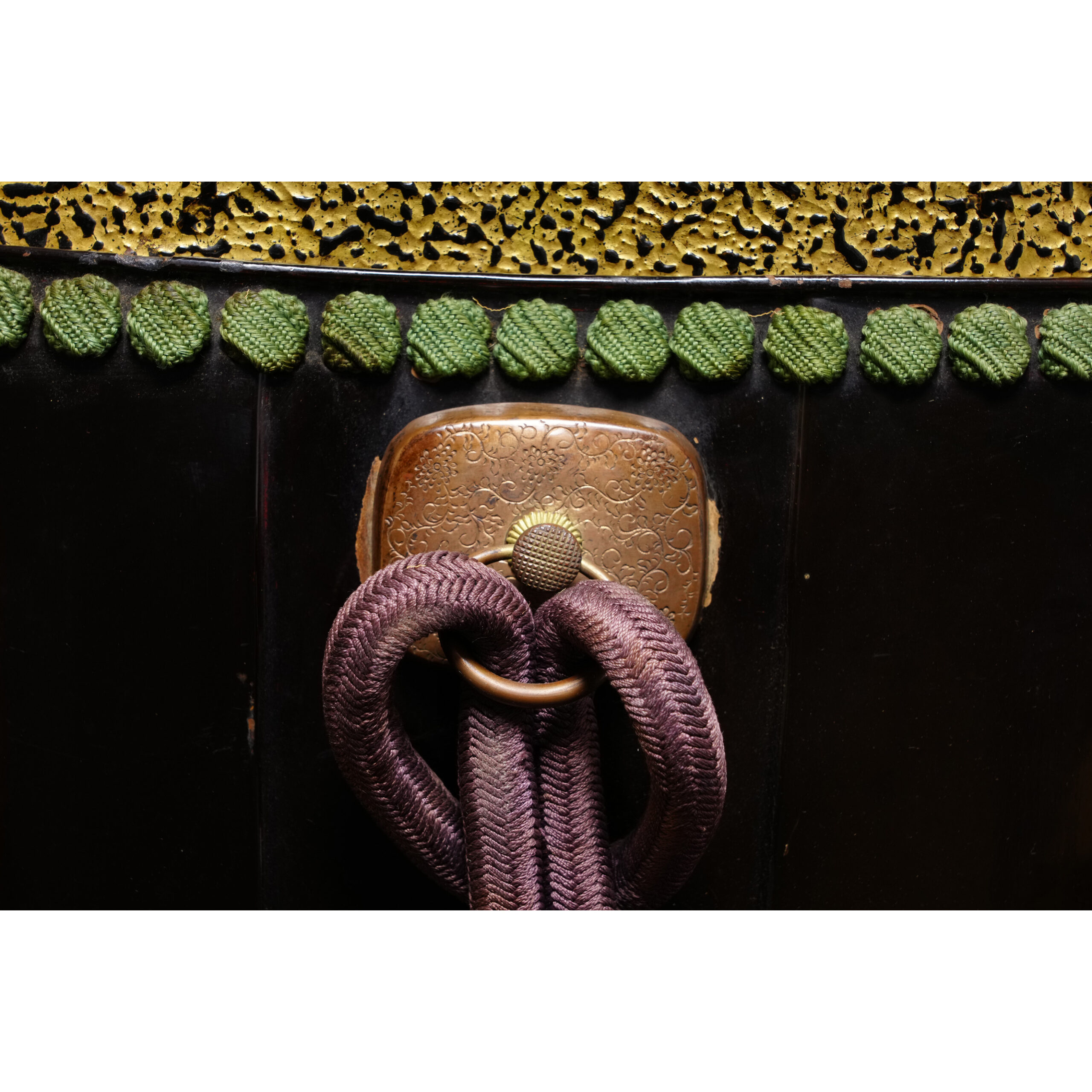
Certification: Tokubetsu Kicho Shiryo Certificate (No. 2005)
On November 6th 2022, this armor was appraised as a Tokubetsu Kicho Shiryo by The Association for the Research and Preservation of Japanese Helmets and Armor, which is the most trusted Japanese armor appraiser in Japan. Tokubestu Kicho Shiryo means special rare article. It is ranked as the third highest of five rankings.
The paper mentions the armor was made in the late Edo period (mid 18th-mid 19th). You can receive this original authentication paper.
An English translation of the certificate is available on request. We won’t charge any additional fee.
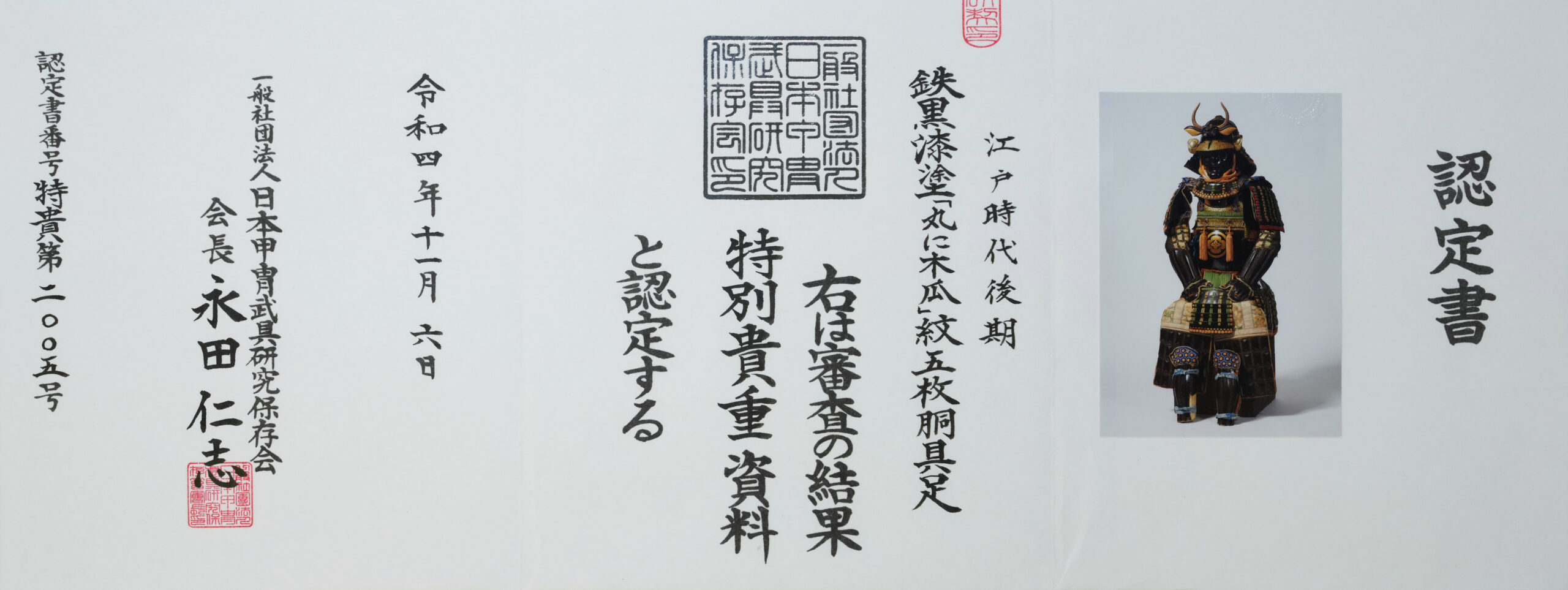
【About us】
Samurai Museum is located in Tokyo, Japan, exhibiting antique artifacts related to the Samurai history. Samurai Museum Shop is the place for those who are interested in Japanese culture and craftsmanship. We deal with antique Samurai swords/armor, traditional crafts made in Japan and so on.
【Antique Japanese Armor and Export process】
After receiving the full payment from you, we will apply for its export permit from the agency for Cultural Affairs to legally export the antique Samurai armor to other countries. It normally takes around 2-4 weeks to receive this permit. And we would like you to expect at least 1-1.5 months for your order to arrive at your given address after you ordered.
【Payment method】
We accept payment through Stripe (Credit card), PayPal, Apple Pay or ChromePay, all of which are secure payment methods. Also, you don’t need to make an account on Stripe for the checkout. If you prefer other payment method, please contact us. You may either pay in JPY, USD, AUD, CAD, EUR, CHF or GBP. The price is set in Japanese Yen. Prices in other currencies are automatically calculated based on the latest exchange rate.

【Shipping duration】
We normally ship via EMS (Express Mail Service) provided by Japan Post. It usually takes at least 5-14 days to deliver the package after you place an order. We offer Free International Shipping as long as we can ship your order by EMS. If you prefer other shipping carriers, please contact us.
We will inform you of the order’s tracking number via email. Please make sure you fill out your valid email address correctly.
*Please keep in mind that due to the spread of COVID-19, there might be possible delays in delivery. If you like to make sure if EMS shipping is available to your country, please contact us.

【How to make sure the condition】
Please keep in mind that what you are going to purchase is an antique item. We uploaded high resolution photos for you to check its condition thoroughly. If you like to see more photos with different angles, please feel free to contact us. We will be happy to send them to you so that you can make informed decision. It is essential for us to know that you are happy with your choice of a sword. and we are prepared to use the best of our ability to serve you.
【How To Contact Us】
Please contact us through email, Facebook Messenger or Live Chat if you have any questions. You can find each icon on the right side of the website. Please click one of them to reach us. We will reply to you within 1-2 business days.
【How To Preserve Antique Samurai Armor】
Dryness, humidity, and bad ventilation might deteriorate the condition of antique Samurai armor. The best temperature to preserve Samurai armor is around 20℃ in Celsius, and humidity should be about 60%. Direct sunlight should be avoided. We recommend storing armors in a room with good ventilation. If you like to display them outside the boxes for a prolonged time, we suggest using a glass case in order for dust not to be accumulated easily. In case you don’t use a glass case, please make sure to regularly dust off from the armor by using a soft brush made of delicate cloth or brush for painting.
If you like to know more about the preservation of this armor, please feel free to contact us.

